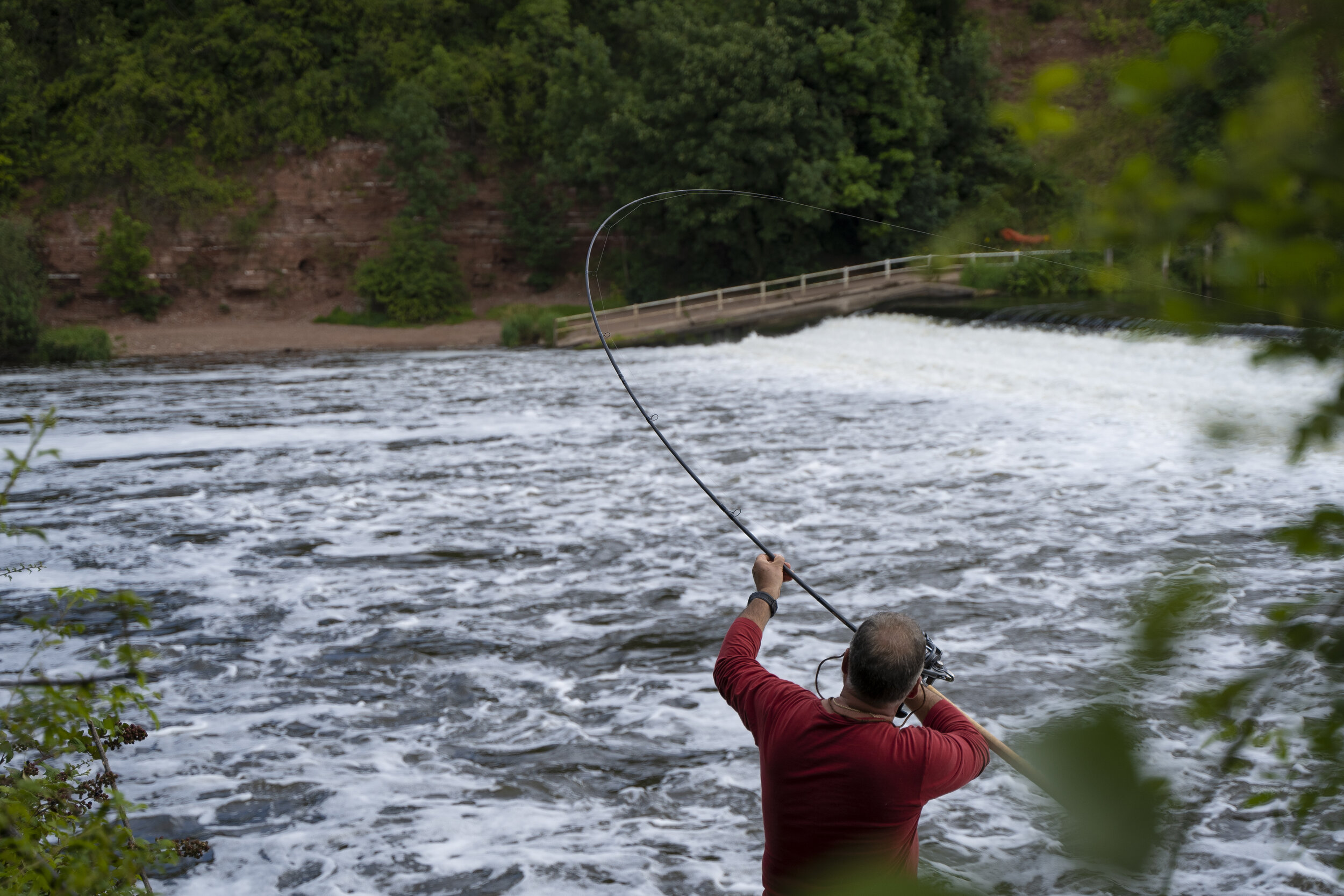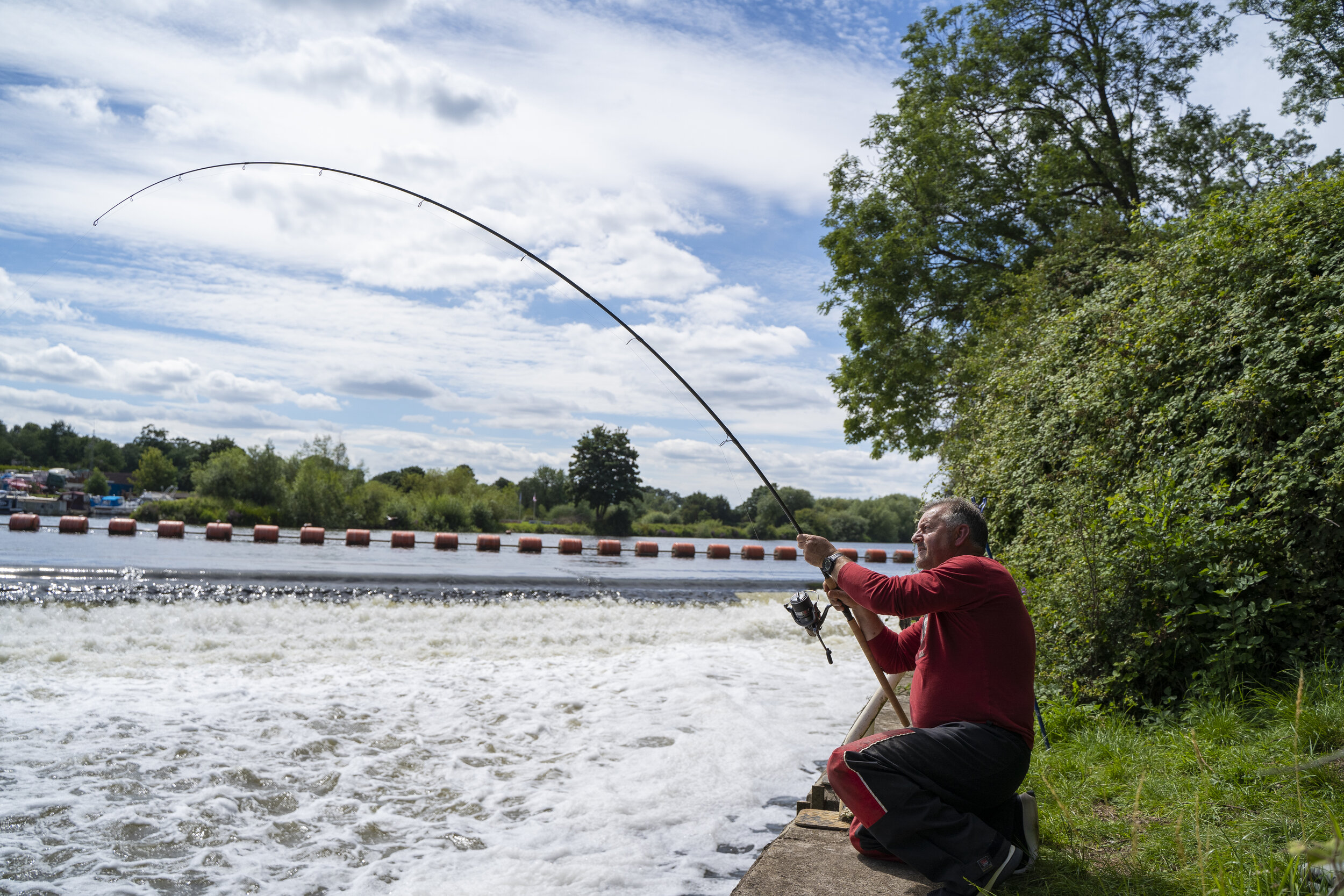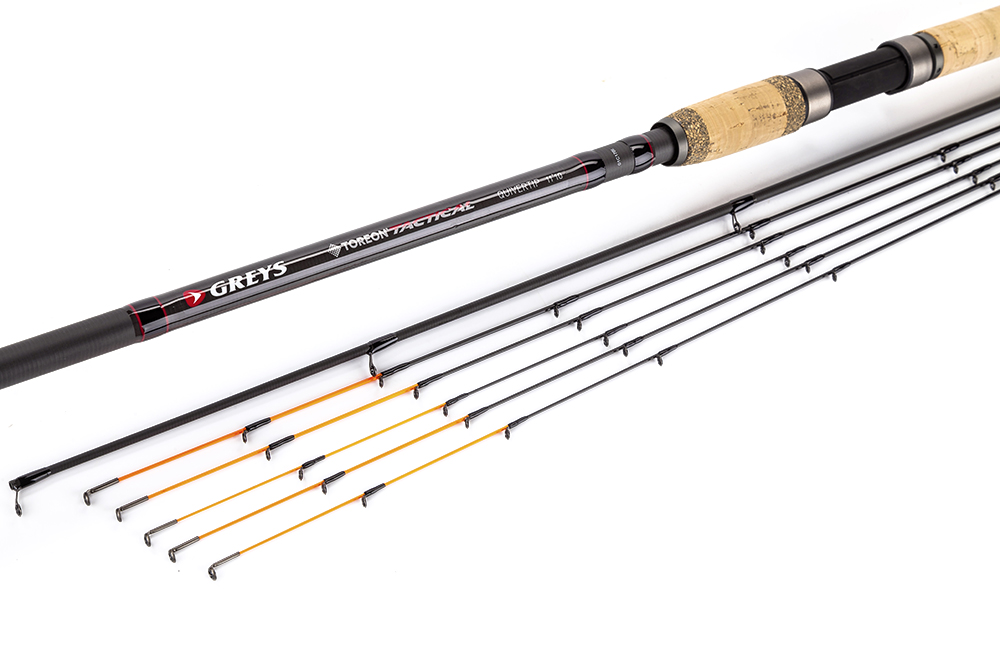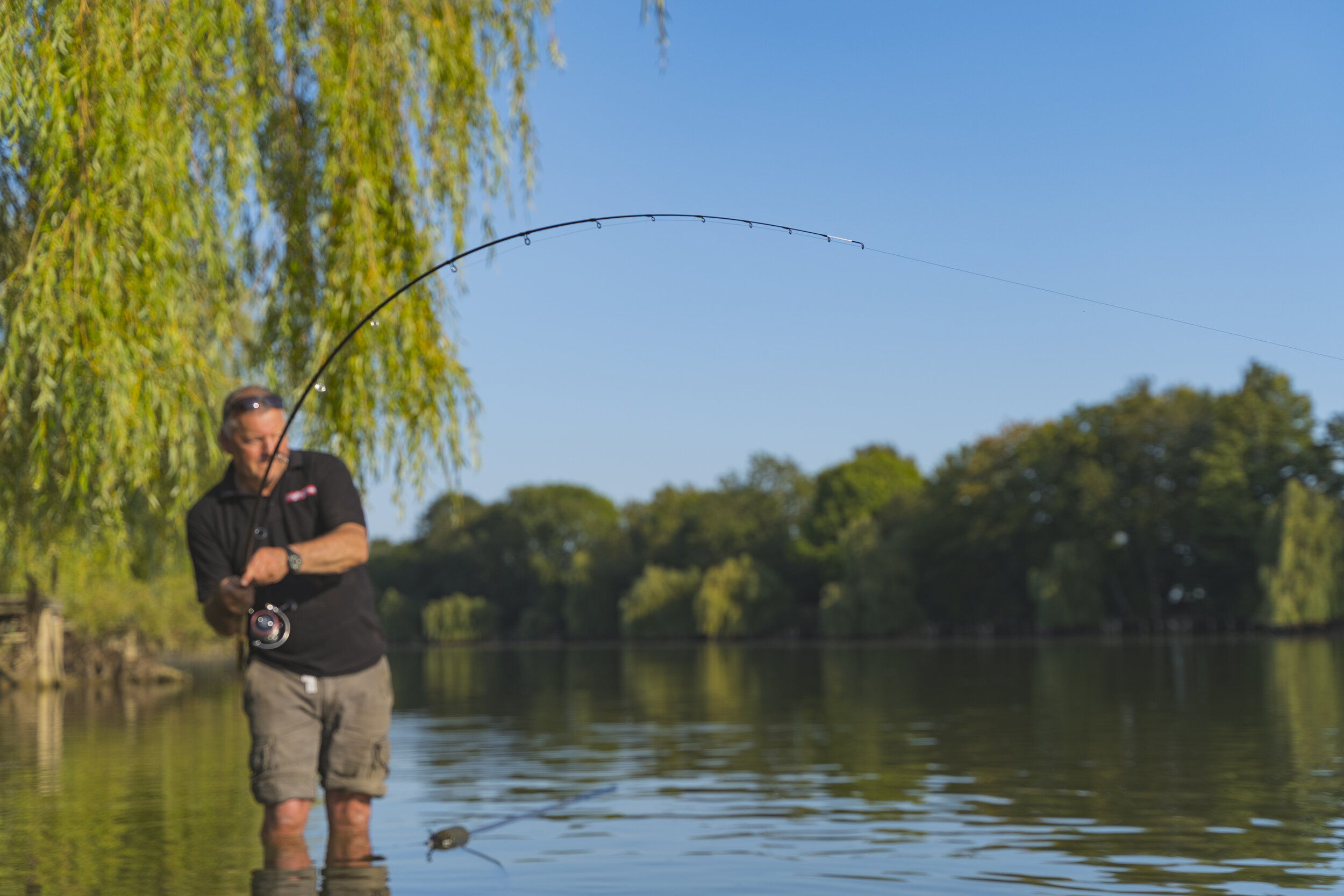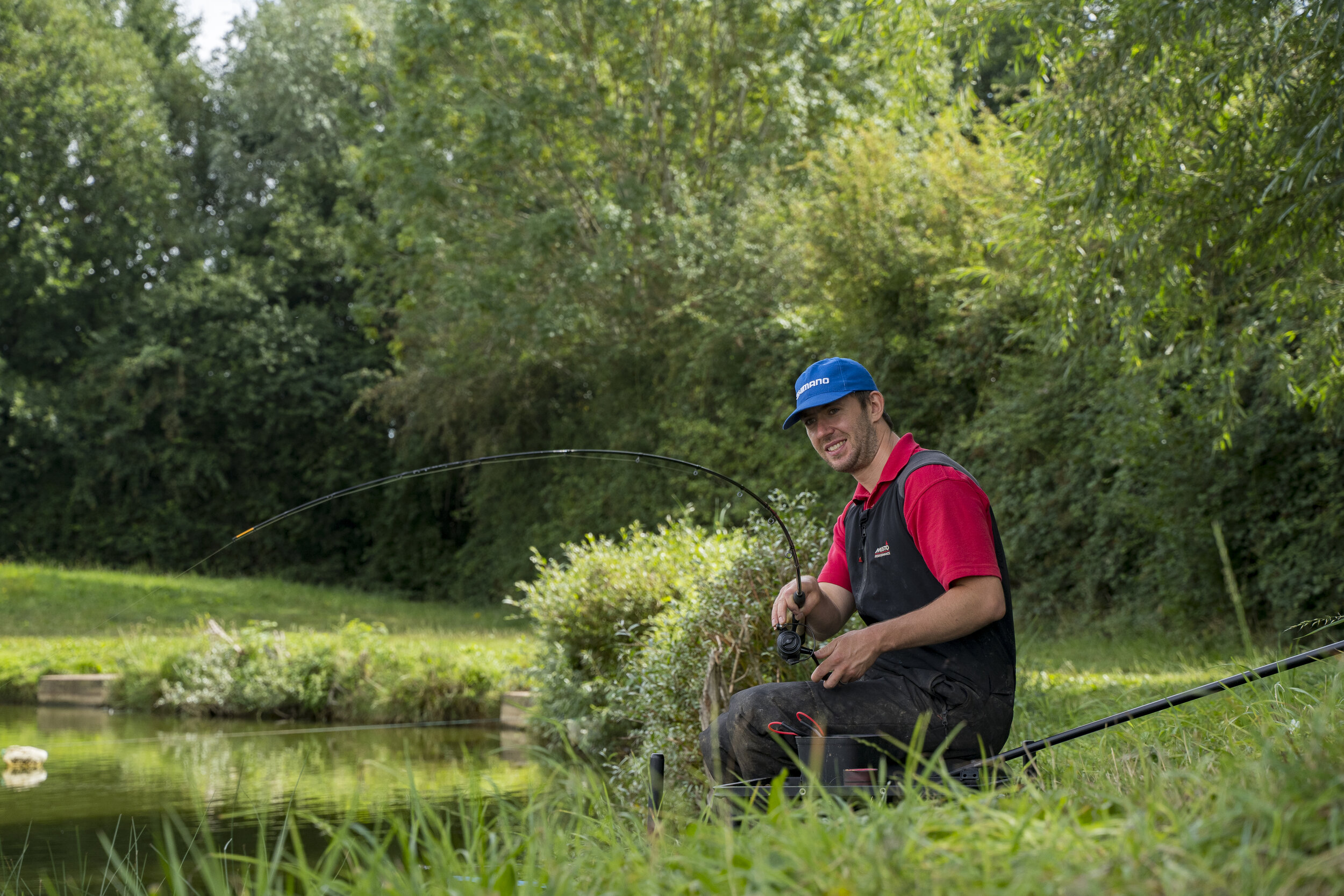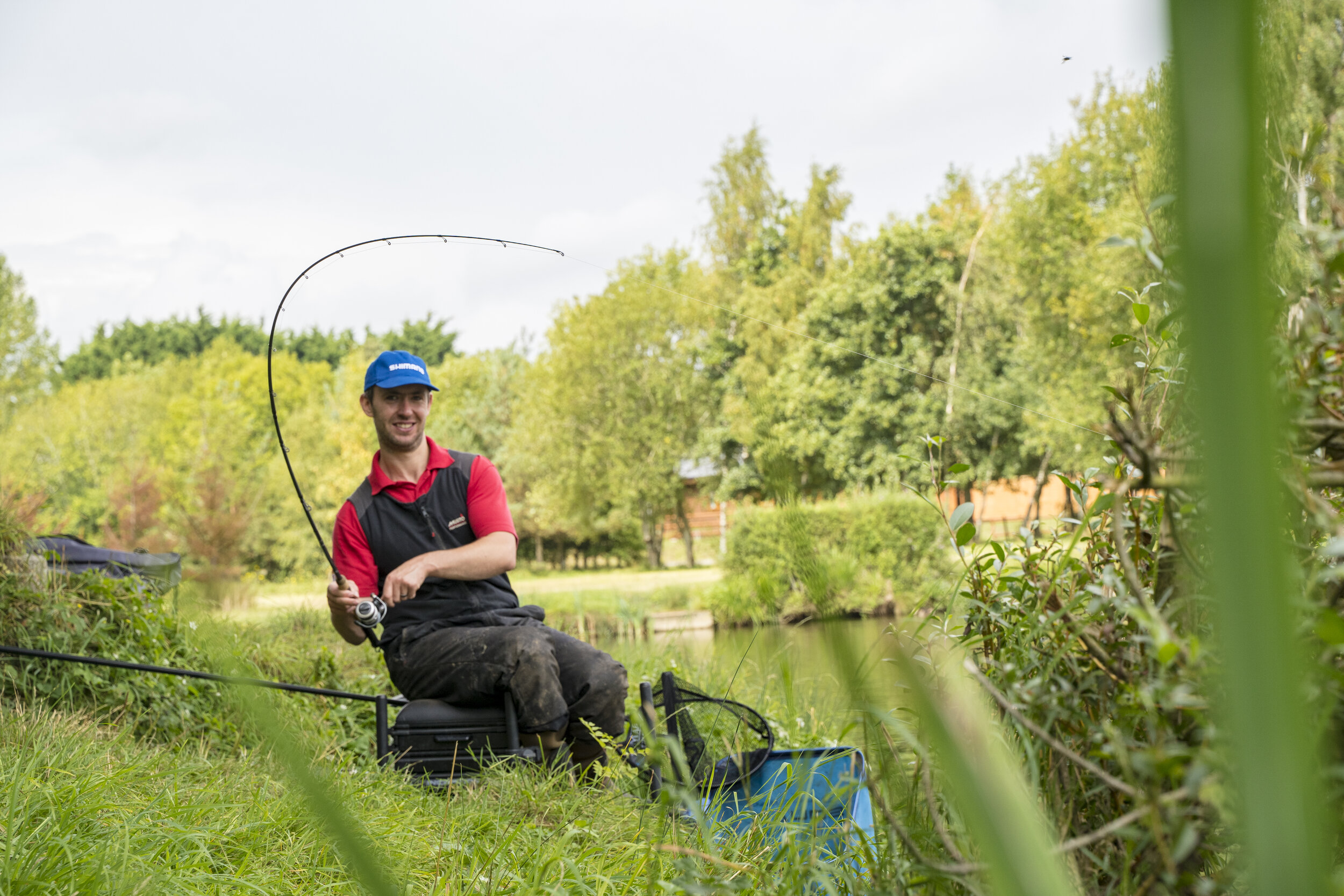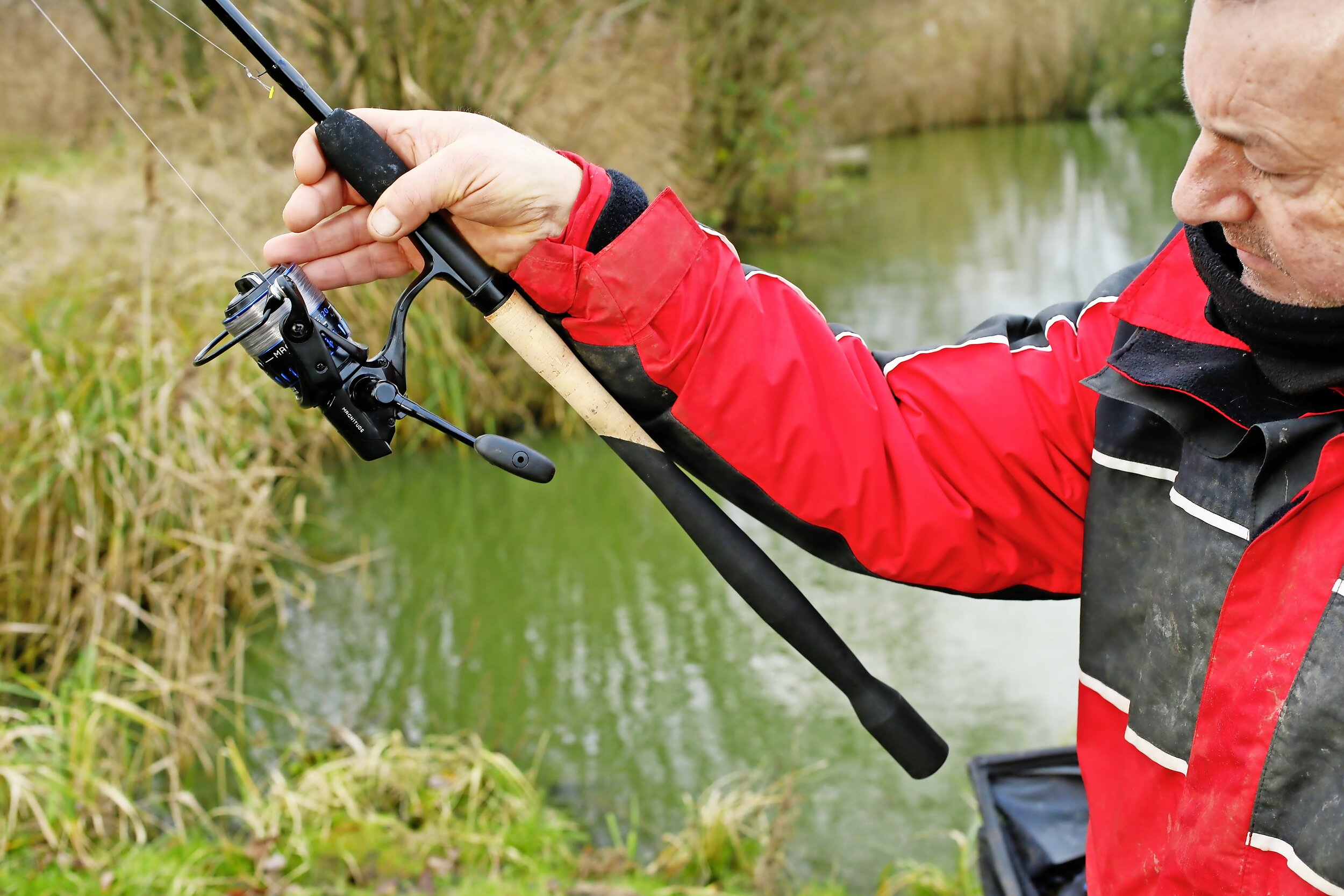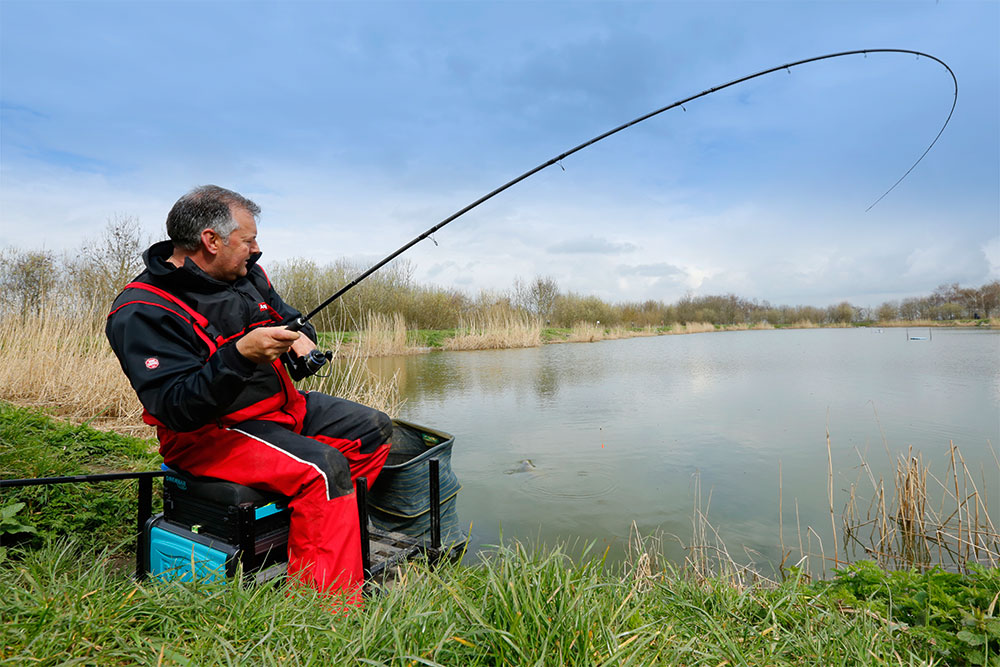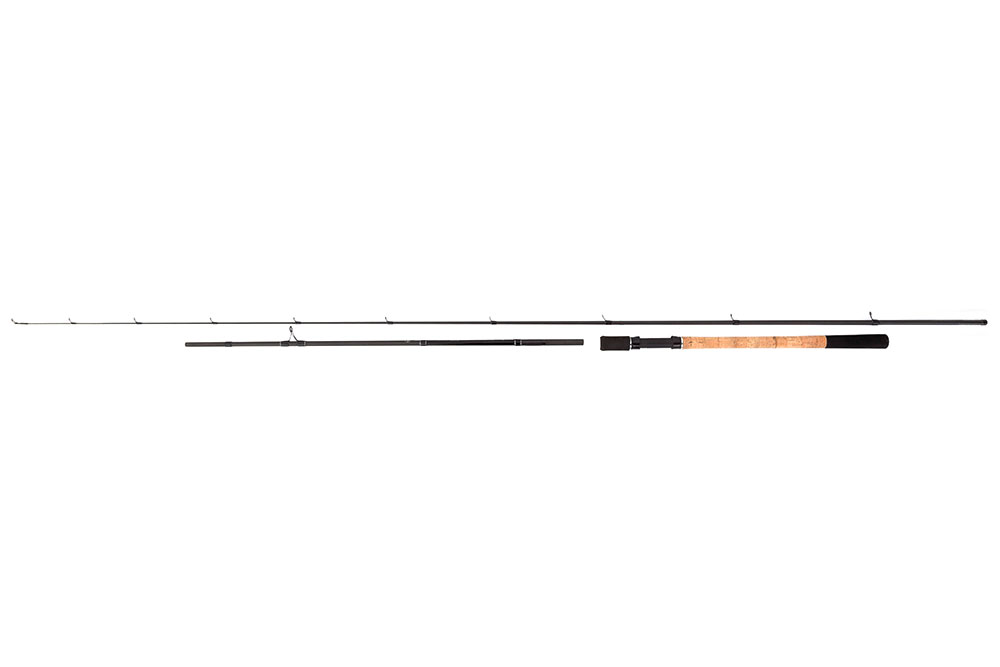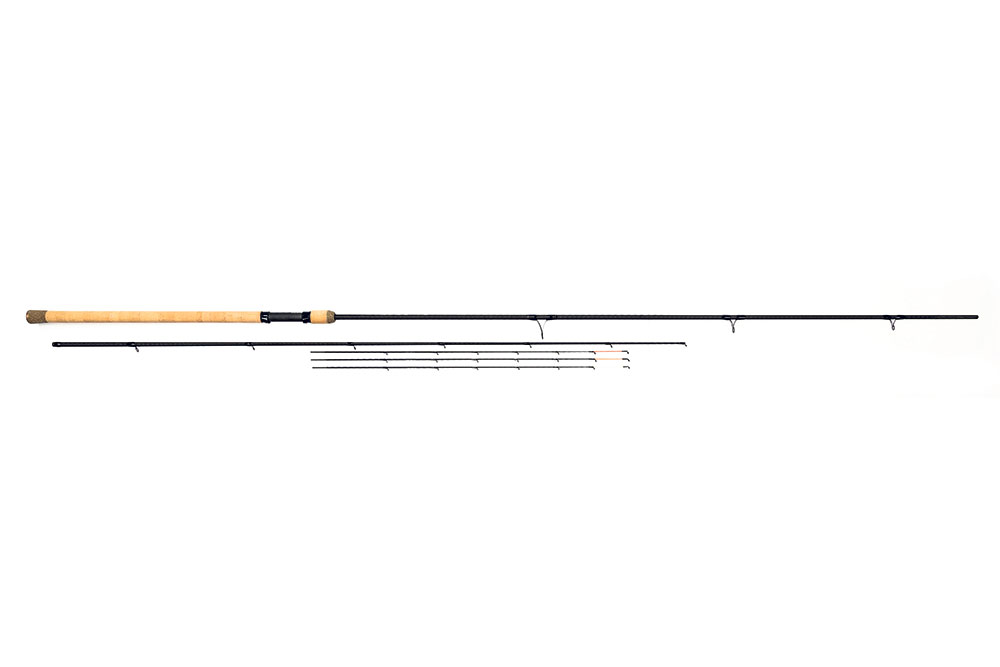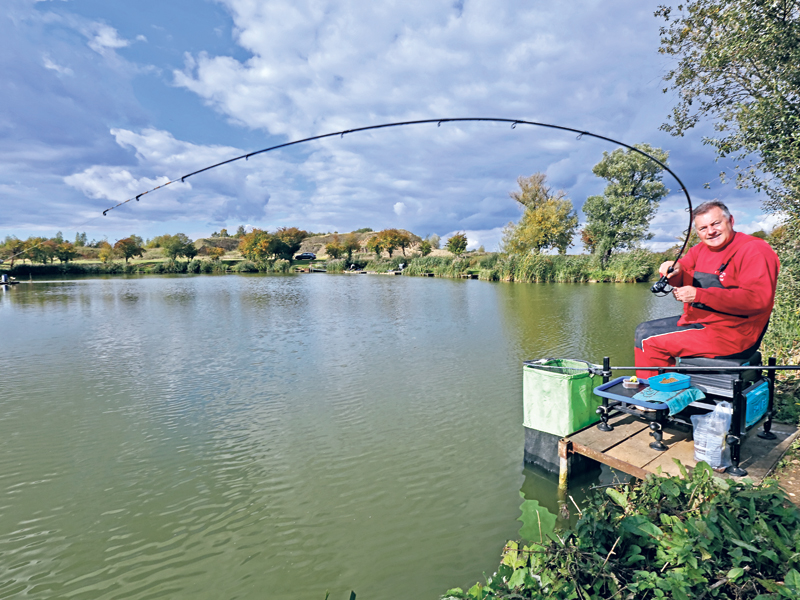Daiwa Powermesh B2 2.25lb test curve rod & Daiwa Emcast 25A reel on test!
THE year was 1974 and I remember it like it was yesterday – Mud’s Tiger Feet had been at No1 for weeks and I’d just met my future wife at school, although I didn’t know it then. Harold Wilson was Prime Minister, and those pesky Germans had won the World Cup for the second time (and two more to come, but I didn’t know that either).
More importantly, my dad had landed a new job with Yorkshire TV, had moved up to Huddersfield and was spending his spare time barbel fishing on the River Swale.
School holidays couldn’t arrive quickly enough. We simply didn’t have barbel nosing around in the Rivers Evenlode or Windrush close to my Oxfordshire home. To this angling-mad lad, catching one became a teenage obsession.
Well, the big moment finally arrived on the banks of the Swale at Skipton. That fish fell to a cube of Bacon Grill (Dad’s favourite). There it lay in the net, seven pounds of statuesque bronze magnificence!
These days, Dad’s living in Italy, chasing carassio and carp, while I live close to the Trent where barbel grow to immense proportions. Ranks of green and camo-clad anglers line its banks looking like soldiers going into battle, as well they might, because the fighting qualities of a natural-born Bertie are more than a match for the stoutest tackle and strongest nerves.
All this brings me to the subject of this week’s Live Test, the latest incarnation of Daiwa’s two-sectioned 12ft Powermesh B2 barbel rod, available in 2.25lb and 2.75lb test curves.
Daiwa had also kindly sent in its new gunmetal grey Emcast 25A reel, which I really liked the look of the moment I saw it.
I don’t know anywhere better to test rough-and-tumble barbel gear than the Trent’s boisterous Gunthorpe Weir. It’s a heaving, boiling, foam-flecked torrent of water whose deafening roar blots out every other sound.
The Trent’s Gunthorpe Weir is the perfect testing ground
An extraordinarily exhilarating angling experience it may be, but boy is it tough on tackle! It’s a boulder strewn snag-pit, and even with Arnie-grade end gear you’re never going to land everything you hook.
I filled the stunning-looking Emcast reel with 15lb Daiwa Sensor line, which you could use to haul a tractor out of a ditch. It was probably a bit overgunned for use with the lighter 2.25lb Powermesh B2 rod that I had chosen to use, mainly because it’s likely to be the one most anglers will prefer.
The Emcast Reel looks simply stunning
I didn’t need to cast anything weightier than a 2oz lead and a PVA bag. The rod has a 150g (5oz) recommended maximum casting weight, but if I were using anything approaching that or casting over 75 yards I would opt for the 2.75lb Powermesh B2.
With a small bag of pellets and meat, and three hair-rigged cubes of porky goodness, it wasn’t long before I had my first bite, and it took even less time for the fish to get itself set firmly into a snag. Fish one, Mark nil.
A simple set-up for barbel
Twenty minutes later the rod top nodded, then the line went slack with a massive drop-back bite. As I wound down to the fish it took off at an astonishing rate of knots, straight across the white water. Happily the Powermesh had enough backbone mid-section to pile on the pressure, despite its fairly soft through action – I’d describe it as forgiving but firm.
Eventually the fish came up in the foam, but the 11lb hooklength had somehow wrapped itself around a loose bit of floating branch. Two attempts to net the whole lot in one go failed dismally, and a desperate third go at scooping up what looked to be a 10-pounder ended in failure. Fish two, Mark nil. Not the rod’s fault, nor the reel’s. Bad angling? You be the judge, but like I said, this isn’t a swim for the faint-hearted.
The Powermesh rod is forgiving but firm
The sun rose, the temperature soared, and I wondered if my chance had gone. Nope, the rod buckled over and it was game on... alas, the line fell slack again just as quickly, and it really was all over. Fish three, Mark nil.
The day wasn’t a complete wash-out, as a decent chub put another bend in the Powermesh, although nothing compared to the brute force of a wild barbel.
This faultless two-piece rod is mellow yet gnarly and growly and would suit nearly all UK rivers. The new Daiwa Emcast reel is just fab – it has an impeccable line lay, and enough winding power to cope with the heaviest of feeders and leads.
A brilliant combination
I really enjoyed its tough and robust feel, which is just as well for a reel likely to get chucked around a riverbank and needing to cope with hauling in double-figure fish. It even comes with a spare spool, so next time I go out with this dream rod-and-reel team I hope to get my three-point win with those barbel.
Price: Rod £126, Emcast reel from £74.99
Daiwa Black Widow Barbel Rod 12ft 1.75lb & Black Widow Specialist Rod 12ft 1.5lb Review
Looking every inch like expensive custom-built rods, the two 12ft Daiwa Black Widow Barbel and Specialist models are built using full-carbon two-piece blanks that are garnished with an understated matt non-glare finish.
They are furnished with a well-spaced set of durable stainless steel framed guides that have hard-wearing, braid-proof aluminium oxide linings. Both rods also have hollow tubular top sections that are ideal for fishing situations which require the use of heavier leads, feeders, and stronger than normal terminal tackle.
However, before you run away with the idea that this pair of affordable specialist rods are both little more than ringed broom handles, they are both supplied with permanently fixed 2oz test curve glass quiver top sections ideal for targeting shy-biting fish or when tackling still or slow, meandering water where a more sensitive set-up will be beneficial.
Which rather bizarrely is a million miles away from where the pair actually underwent their endurance of a live test. Heavy rain and high water levels just after the start of the new river season had meant that the fish had been pushed out of the normal areas I would expect to bag barbel and catch reports from the opening week were pretty sparse. After a few phone calls I discovered a few fish were being caught from the tidal Trent. If anywhere’s going to test a barbel rod to its limits it’s here, I thought to myself. If it can survive this test it will handle anything else.
The Tidal Trent is a serious water. It’s wildly fast flowing in spots, very deep in places, boils and bubbles like a witch’s cauldron, and is generally completely unforgiving of angling errors.
Its rock and boulder banks and bed are a nightmare, and just to make things doubly difficult for the angler, it flows both ways depending on the tide of the day. Oh yes, it’s quite tasty too but most definitely more Vindaloo than Korma!
The fish that swim the inhospitable depths of the Tidal Trent are nothing less than lean, mean, super fit fighting machines. Think of them as permanently living on a fast-paced treadmill! And that’s what makes the tidal reaches so popular with a multitude of match and specimen anglers. It’s wild water fishing at its raw best.
So where and how does this Daiwa pairing fit into the equation? Well although both rods are close to the cusp on both casting weights and casting distances on a river such as this, the lighter Specialist model is well worth a look, even if you’re a match angler targeting fast-water bream, skimmers and hybrids.

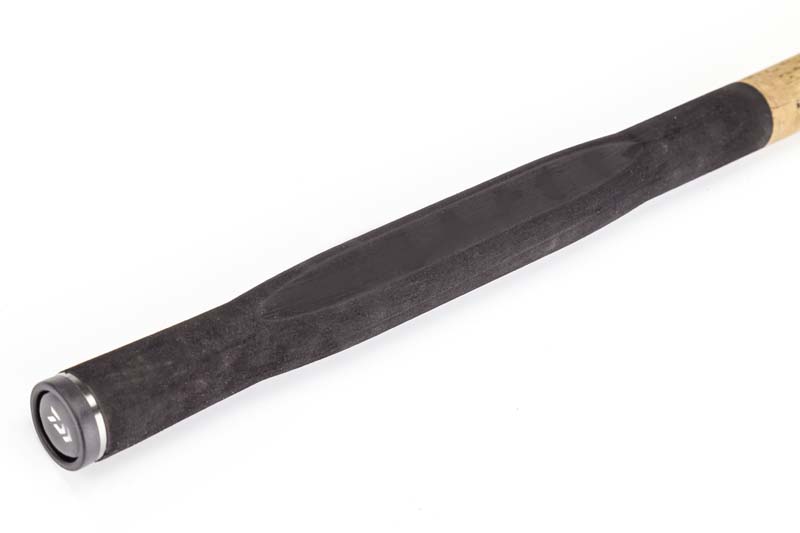

It has a bit more backbone for casting heavier feeders than a normal match style quivertip feeder, but with just enough cushioning softness to allow for lighter lines, from say 0.14mm and more, and smaller hooks from size 16 hooks upwards.
The Barbel model was pushed to its absolute limit on this live test, as the session kicked off with a hefty 70g feeder cast to mid-river and went up from there, as the ebb tide pulled hard. Fish-playing wise, the blank’s progressive action is a little too much for a powerhouse river such as this, and I did lose a couple of big fish I couldn’t keep out of the boulders. Maybe it was it was just bad angling on my part. But let’s face it, none of us ever blame ourselves! And the occasional loss is always going to be expected when fishing such an extreme venue.
By the end of the test, however, the number of fish the rod put on the bank vastly outnumbered those that had escaped. If rods could talk, this one would have said ‘thank flip that’s over with!’
Mark’s verdict
For my money the Black Widow Specialist model would make a good stillwater tench and bream tool and would also double-up as a very handy winter chub rod for any water. The Barbel model is an ideal all-rounder for any river, maybe better suited to the more sedate Thames and Avon flows, where its 2oz fixed quivertip section would come into play. Pacier rivers such as the Wye, Severn and Trent could be tackled with its tubular carbon top section.
The tidal Trent really is at the upper limit at what the rod can handle. But the venue is a different animal to most waterways and normally requires tackling with what can be hugely expensive bespoke rods. The fact that this high value for money Black Widow rod tamed plenty of fish from this river speaks volumes about how good it is.
Angling Direct's Advanta discovery rods review
When a good mate of mine suggested that as tackle editor of Angling Times I should take a long hard look at Angling Direct’s Advanta Discovery rods I admit to having been slightly sceptical.
Get your hands on all the latest rods, poles, reels and accessories at this year’s Big One Show
My previous experience of own-brand rods over the years had left a lot to be desired, to be honest. However, for friendship’s sake I rang Angling Direct’s commercial manager Stewart Downing, and arranged to pick up the Discovery RVS rod range.
Stewart, no mean angler himself, said he’d had plenty of input into the rods’ design and build, which somewhat allayed my fears about any lack of quality.
Turning them over in my hands I was more than pleasantly surprised by the rods’ looks. The lightweight, gunsmoke grey two-section blanks are clearly made from quality carbon cloths. Fittings include natty carbon-effect 18mm DPS reel seats with gunmetal grey hoods, and old-school full cork handles without a trace of Duplon or EVA to be seen.
Understated decals add to the classy look, and the rods are ringed with decent-sized ceramic-lined guides throughout. I was very impressed, especially given their low prices.
The one that really caught my eye was the Discovery RVS Twin Tip Power S/U Barbel rod.
Unusually, this bertie-beater comes with two identical-looking top sections emblazoned with luminous white tips, but with test curves of 2.25lb and 2.75lb, giving the user loads of tactical options.
I live reasonably close to the Trent, the UK’s best barbel river by a country mile, so it made perfect sense to go there with the Discovery Twin Tip. I knew just the swim!
Gunthorpe Island is fishable on a syndicate ticket, but I’m allowed on there every now and again. ‘Forceful’ does not come close to describing the heaving cauldron of white water that greets you at Gunthorpe Weir. The deafening torrent ripping over the sill fills the stoutest heart with trepidation but it’s a stunning assault on the senses, with clouds of spray and that unmistakable aroma of river.
Every now and again the wind whips cotton balls of white foam from the water’s surface, and these rise into the air and vaporise as though they’d never existed. Magical stuff!
I rigged the Advanta with 15lb reel line, 12lb hooklength and a super-strong hook, and should really have gone even heavier.
This is not a distance-casting rod – its progressively through action is geared more towards helping you land big, aggressive fish than chucking 100 yards. But for hitting 70 yards with hefty kit and lines, the rod quite probably performs better than some costing three times as much.
By Gunthorpe’s standards it was a slow day. I’d mistaken one bite for weed on the line and lost the fish (my fault), so next time the tip pulled round I was all over the rod like a cheap suit.
Piling on the pressure, I was impressed by the amount of grunt the rod’s mid-section put out. Being a twin tip, it’s versatile, too. The 2.25lb top is ideal for all normal work, while the meatier 2.75lb top is perfect for fast, deep rivers, even those swollen by floodwater.
You could, in fact, have a matching pair of these for the price of one expensive barbel rod that in my humble opinion would not do the job any better.
Our verdict:
Pound for pound, the Discovery Twin Tip Power with its 2.25lb and 2.75lb test curve top sections is arguably one of the best barbel rods on the market. You’d be hard-pushed to find a rod of its type to match it for the asking price.
It will tackle powerful rivers such as the Trent, Severn or Wye with its lighter top section in place, while for heavy leads and the meatiest of terminal kit the 2.75lb top comes into play. For playing big barbel, this eye-opening own-brand rod is up there with the very best.
Price: £64.99
Greys Toreon Tactical Quivertip 11ft 10ins rod live test
Wth daylight hours reduced in winter, many anglers, myself included, much prefer to fish short sessions rather than spend days on end sat in a bivvy and carting mountains of tackle around.
It’s much more enjoyable to grab a rod, a net, a small rucksack and a couple of loaves of bread and wander the banks of your local river searching out a chub or two. The Greys Toreon Tactical Quivertip is the perfect tool for this. It's as versatile as a Swiss Army knife.
There are four lengths available in the range – 10ft 6in, 11ft 10in, 12ft 6in and 13ft – to cater for the needs of every stillwater and river coarse angler. They're just as much at home dishing it out on running water as they are bagging up at your local commercial or lobbing out a feeder on a large natural venue.
For this live test I’d chosen the 11ft 10in version, as at this length it’s a great
all-rounder. It’s just about short enough to creep into tight overgrown river swims, although if this is what you're primarily going to be using a rod for then the 10ft 6in model would be recommended.
This is also long enough to chuck a feeder to islands and open swims on commercials. Unlike most feeder rods, which come with two or three push-in tips, the Toreon Tactical Quivertip comes with five, ranging from 0.75oz to 3oz.
The rod also features a detachable butt grip which not only makes it more compact for storage, but also gives you two handle length options. There are nine lightweight gunsmoke SiC line guides on the rod and six equivalent guides on the five quivertips.
To test the rod I headed off to the tiny River Ise in Northamptonshire. This is a tributary of the River Nene and requires a stealthy approach at the best of times to avoid spooking the resident chub.
The fact that the water was fairly low and clear meant I’d have to be extra stealthy. Tactics were kept simple. My reel was loaded with 5lb mainline on to which I threaded a running link leger stopped by a buffer bead over a small swivel.
A piece of breadflake was pinched around a size 10 hook and cast into a deep pool between two shallow stretches of river. I'd baited the mouth of the pool and a couple of other spots along the far-bank reeds with a couple of small balls of mashed bread.
The first few spots didn’t produce a single knock, but a cast towards an overhanging tree saw the tip tremble before it pulled around in a classic chub bite.The fish was quickly steered away from the branches and, after a couple of jagged lunges, a small chub, was drawn over the landing net.
The next two casts produced a couple more chub of a similar size.
THE VERDICT
At almost £140 there are certainly plenty of cheaper rods on the market. But when you look at what you get for your money I think this rod is worth every penny. If you do a spot of river fishing, as well as the odd session on a commercial carp water, and enjoy feeder fishing for bream, it will cover the lot. And the range of five tips supplied with it really do make it suitable to a wide range of duties.
James Furness, Editor, Improve Your Coarse Fishing
TECH SPEC
Length: 11ft 10in
Pieces: Two
Tips: 0.75oz, 1oz, 1.5oz, 2oz, 3oz
Handle: Full cork
Reel seat: Screw lock
Guide type: SiC
Hook keeper: Yes
Korum twin tip plus rod review
As a keen specimen angler I find myself travelling to different venues in order to seek my chosen quarry. One week I might be tackling the strong currents of the River Trent for big barbel, while the next I could be sitting behind bite alarms on a tench pit.
These venues obviously require a number of different rods to cater for the different styles of fishing. Then of course you have to take conditions into account. Will the river be in flood? Does the lake require a long range cast? This common dilemma often means taking at least two different rods to the bank to cater for whatever conditions I’m faced with on the day.
It’s the reason I got rather excited when Korum’s new Twin Tip Plus rod landed on my office desk. It’s a rod that has been designed to give the angler the choice of fishing a different test curve without the need to buy more than one rod, and still enjoy all the quality and endurance of Korum’s usual high standards.
With its spliced hollow 1.75lb and 2.2lb top sections, it allows the angler to set up their rod according to the conditions, venue or species they’re targeting on the day and the user can always change over if, for example, they are feeling under-gunned.
Surely Korum already offers something like this in its current Twin Tip version, I hear you ask.
However, while those rods have been faithful servants to anglers over the years, they still ultimately only really offer the same test curve whichever tip you may change to.
Korum’s new product means that only the butt section is the same when changing tops, making it noticeably obvious to the angler that he or she has more or less punch.
The company designed the rod for multiple scenarios and species. For example, you could use the 1.75lb top section for float fishing for big fish on a river while the 2.2lb tip could be handy for casting out to 70 yards on a gravel pit for carp, bream and tench.
With its choice of two test curves, the rod will ultimately appeal to barbel anglers, though, and this is really where it comes into its own.
The proof, of course, is always in the pudding, so in order to fully test out the idea I decided I was going to sample the rod’s capabilities twice over.
In other words, instead of fishing just one venue, I was going to test out each tip on two separate venues to re-enact the common scenario as described above.
Normally, when I visit the River Severn, I will fish a rod with a test curve of over 2lb, but with few snags and the river running lower than usual, plus the fact I was fishing into the deep channel on the inside, I opted for the 1.75lb top.
I fished a scaled-down rig with small pellets to cater for the clear water conditions. It didn’t take me long to test out the rod’s action when a 7lb barbel ran off downstream with my hookbait. Pumping the fish back in the flow, the high modulus carbon blank performed excellently, bending right round to the butt but with enough power to get the fish in without disturbing the feeding fish in my swim.
Two more fish followed but it was soon time to test the other tip so my next port of call was some 120 miles away on a very narrow stretch of the River Nene known as Castor Backwater. Snaggy and full of features and, of course, barbel, I knew this would be the best venue to test out the heavier tip.
Again the rod came up trumps and handled everything I threw at it, as I landed a barbel of 5lb and a chub well over 4lb.
Mark Peck
Maver Diamond Feeder fishing rod review
SHORT feeder rods are still very much in vogue on commercial fisheries and the 10ft 6ins version of the new Maver Diamond Feeder rods are no exception.
BUY NOW from £179.99 from Chapmans Angling
Super-accurate on the cast, they can be tucked down the side of a platform out of the wind, and are that bit easier all round to handle when elbow room is at a premium.
Provided you’re not faced with a seriously long chuck, rods like this will cast far enough to put you on the fish on most commercials. And, needless to say, they are ideal for Method tactics in the margins where really big fish are about.
Maver’s latest Diamond Feeder 10ft 6ins rod, in two sections, is the perfect length for most commercial feeder and straight lead tactics.
It’s one of four in the range, all boasting high-modulus carbon, cork handle with EVA casting and thumb grips, low-profile lined ceramic guides and the ever-handy folding keeper ring. You also get three graded carbon quivertips.
Unlike a number of other shorter rods that I have tested, Maver’s 10ft 6ins Diamond Feeder has the casting clout to propel a 30g flatbed Method feeder a decent distance with a fair degree of accuracy. I proved this during a live test at Decoy’s mixed-stock Horseshoe Lake… and before any of you familiar with this venue clamour that this lake hasn’t got a long cast on it, I also spent some time casting different weights and distances on the much larger Beastie Lake.
My findings weren’t all that different from Maver’s recommendations, but in my opinion the blank’s limits are being pushed with anything over 60g (2oz) chucked 60 yards.
To be honest, that’s more than enough power and distance for most day-ticket fisheries. A huge plus point is the rod’s non-locking, progressive action with no flat spots.
As you can see from the picture, it tightens up really quickly from a third of the way down the top section, putting you in command when a fish is at the net.
Despite this the rod is not overly stiff, and you’d need to be really clumsy to suffer many hook-pulls. As Dame Shirley Bassey sang, ‘Diamonds are forever’…and sure enough, this rod’s a keeper!
THE VERDICT
The delightful jet black Diamond Feeder gets a huge thumbs-up from me. It’s everything you could wish for. It’ll cast a fair distance when you need to, it’s super-accurate at short range, and it can be used with a wide choice of weights for tactical flexibility. At just 181g it’s very light, and its progressive action combines controlled pulling power with enough softness to make it suitable for reel lines from 4lb to 8lb, with hooklengths down to 0.12mm.
Mark Sawyer
Sensas Black Arrow feeder rods
The Full Range
Black Arrow 800 Feeder
11ft medium – £179.99
12ft medium – £189.99
13ft medium – £199.99
13ft medium/heavy – £209.99
14ft heavy – £229.99
14ft super heavy – £249.99
Black Arrow 500 Feeder
9ft medium – £129.99
10ft medium – £139.99
11ft medium – £149.99
12ft medium – £159.99
13ft medium – £169.99
Black Arrow 300 Feeder
9ft medium – £59.99
10ft medium – £69.99
11ft medium – £79.99
12ft medium – £89.99
Feeder fishing has seen a massive upsurge in popularity, and nowadays the well-prepared match angler has a rod in his holdall that suits every eventuality.
Much of the fervour associated with all things feeder fishing is down to our friends from the Netherlands, who have made the tactic an art form.
Little wonder, then, that one of the largest Continental tackle and bait companies, Sensas, has brought out what looks to be the most comprehensive range of feeder rods yet under the name Black Arrow.
There are 15 rods in all, in three price bands – the 800, 500 and 300 series. The rods are built from Nano-Flex carbon and all blanks are furnished with quality ceramic-lined guides and supplied with three push-in quivertips, graded to suit the various test curves.
Sensas has achieved the perfect combination of power for casting with softness at the fish-playing stage, and running the gamut of slender 9ft light feeder models through to hefty 14ft super rods for long-range chucks on big lakes and rivers, there’s something for everyone.
Korum's new range of feeder fishing rods
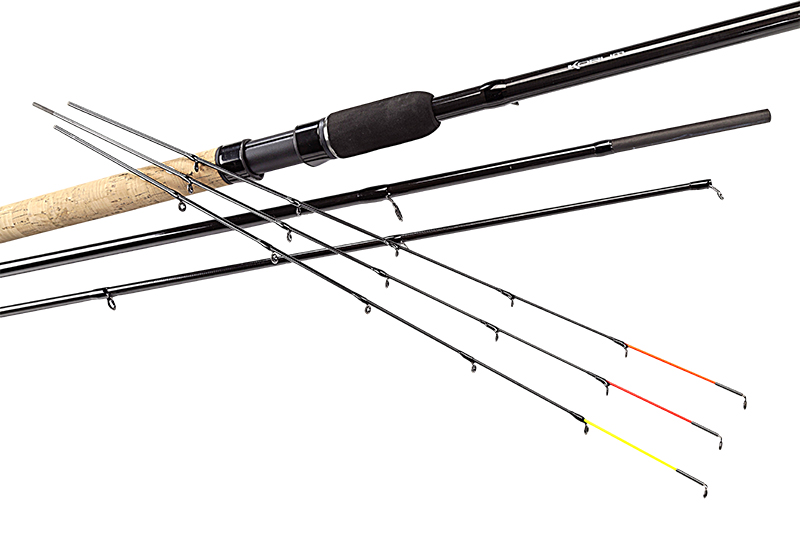
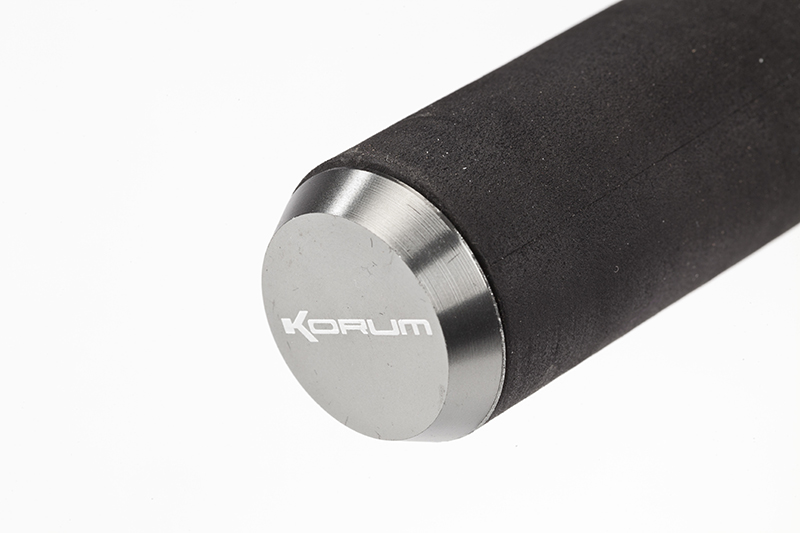
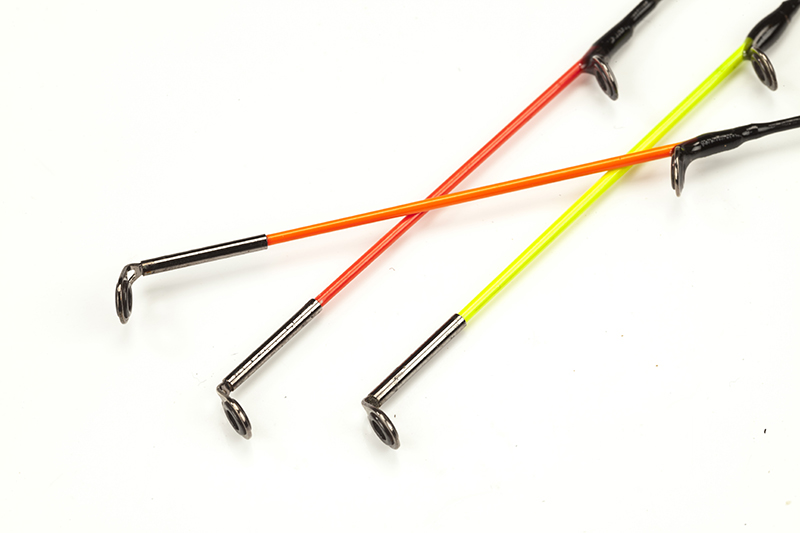

Pleasure and big-fish brand Korum has launched a range of three-piece feeder rods that are sure to be a huge hit. The eight-strong collection features models ranging from 11ft to 13ft, and covers all short, medium or long-casting ranges. The rods are perfect for all types of feeder fishing on both rivers and stillwaters and have maximum casting weights running from 45g to 180g.
11ft Feeder 45g
Ideal for lakes where feeders need to be cast accurately at short or medium distances. A versatile rod with a line rating of 4lb-8lb, it is supplied with three 2.65mm colour-coded quivertips: orange (light), yellow (medium) and red (heavy).
PAY AROUND
£44.99
12ft Feeder 45g
Described by Korum as a ‘fantastic all-rounder’ with plenty of backbone, it has
a 4lb-8lb line rating, and comes with three 2.65mm colour-coded quivertips (light, medium and heavy).
PAY AROUND
£44.99
12ft Feeder 60g
A rod with more power for casting larger feeders and making longer casts. It has
a 6lb-8lb line rating and comes with three 2.65mm colour-coded quivertips (light, medium and heavy).
PAY AROUND
£44.99
12ft Feeder 90g
This rod is for large feeders and long casts, but it retains enough tip sensitivity for silverfish work. Ideal for medium-paced rivers, it has a 6lb-10lb line rating and comes with a trio of 3.3mm colour-coded light, medium and heavy quivertips.
PAY AROUND
£44.99
12ft Feeder 120g
The most powerful 12ft model in the series. A good option for fast water, but with a sensitive tip action that allows plenty of options. It has a line rating of 6lb-8lb and comes with three 3.2mm colour-coded quivertips.
PAY AROUND
£44.99
13ft Feeder 120g
As with the two other 13ft models in the range, this rod has a slightly more powerful tip for improved casting distance and accuracy. It has a line rating of 6lb-10lb, and comes with three 3.2mm colour-coded quivertips.
PAY AROUND
£49.99
13ft Feeder 150g
More power and a faster casting action make this rod ideal for when long casts and heavy feeders are the order of the day. Great for large, open stillwaters and fast-paced rivers. Carries a line rating of 6lb- 10lb and comes with three 3.2mm colour-coded (light, medium and heavy) quivertips.
PAY AROUND
£54.99
13ft Feeder 180g
With a casting weight of 180g, this powerful rod will comfortably launch feeders beyond 100m. Boasting large-diameter guides, it can also be safely used with shockleaders. It has a line rating of 6lb-10lb, and comes with three 3.2mm colour-coded (light, medium and heavy) quivertips.
PAY AROUND
£54.99
Daiwa relaunches its Powermesh Specialist fishing rods
Daiwa has reintroduced its famous Powermesh rods which, back in the day, had a reputation among carp anglers for being cutting edge.
The latest seven-strong collection includes a dedicated 2.75lb test curve barbel rod for float and feeder use. The float rods come in 13ft, 14ft and 15ft lengths and are well suited to heavy waggler and deep-water slider work using reel lines from 3lb-10lb. A crisp action makes them ideal for long-trotting with Avons and big stick floats on fast-flowing rivers for chub and barbel.
The three feeder models (11ft 6ins, 12ft 6ins and 13ft 6ins) all come with quivertips of 1.5oz, 2oz and 3oz test curves, and would seem to be as much at home with open-end feeders for summer tench as they would be tempting winter river chub using maggot and bread feeders.
With casting weights of up to 50g, 70g and 90g, respectively, each rod is built to take lots of stick, reflected in the use of high-grade carbon cloth with a 1k carbon weave along the butt sections for added resilience.
As you’d expect from Daiwa, the classy non-flash matt-black blanks are of the finest quality, with full cork handles, original Fuji DPS reel seats, stainless steel guides with lightweight LS ceramic rings, and hard-wearing aluminium butt caps. All these work together to give the rods a pleasing custom-built aesthetic look.
PAY AROUND
£107.99 to £125.99
Drennan Acolyte Plus Compact 13ft review
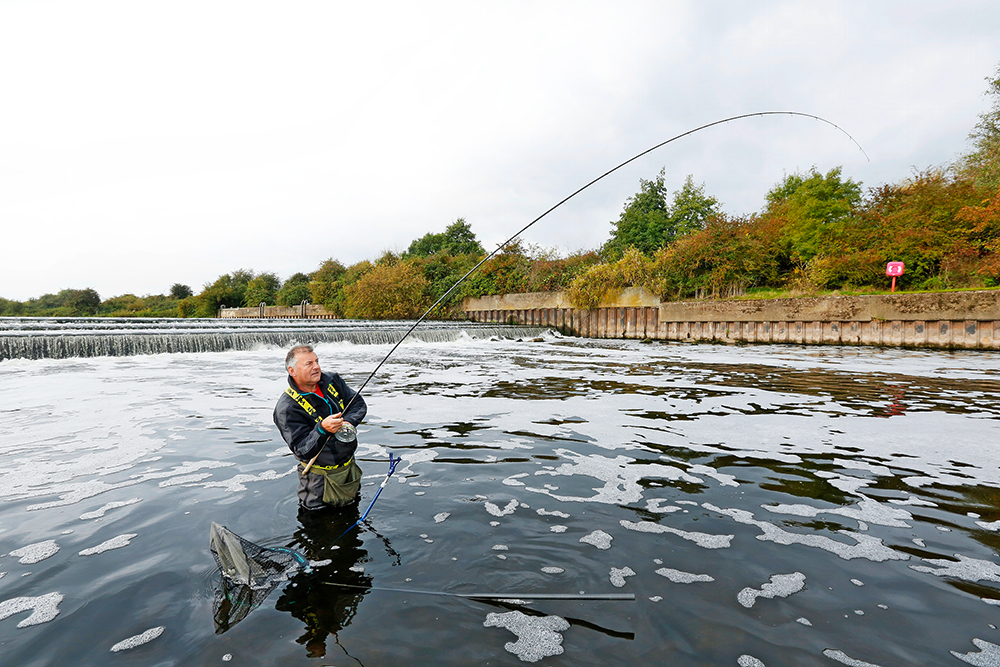
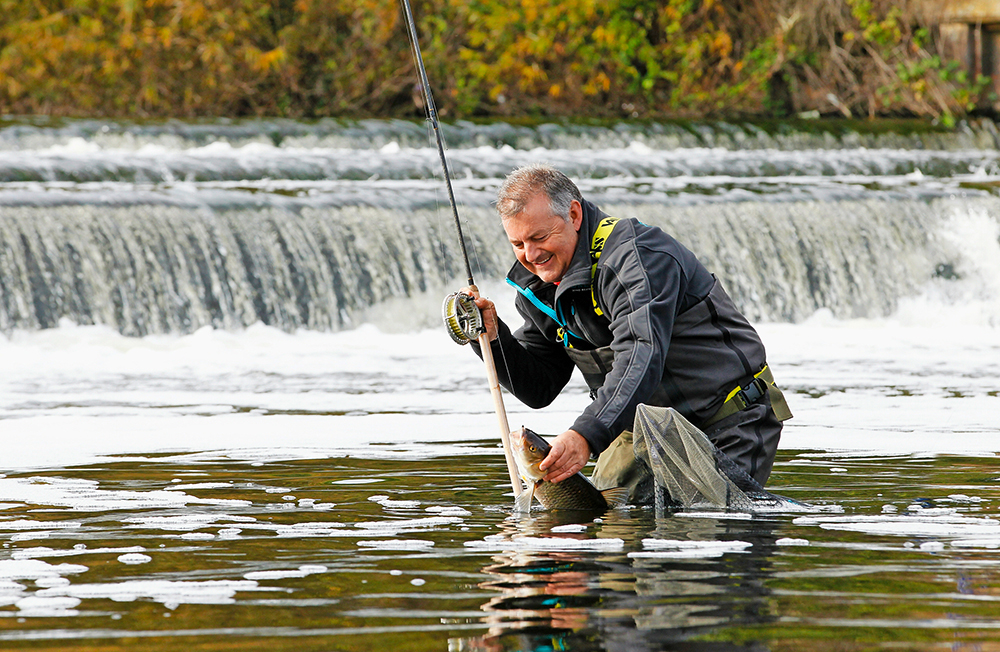
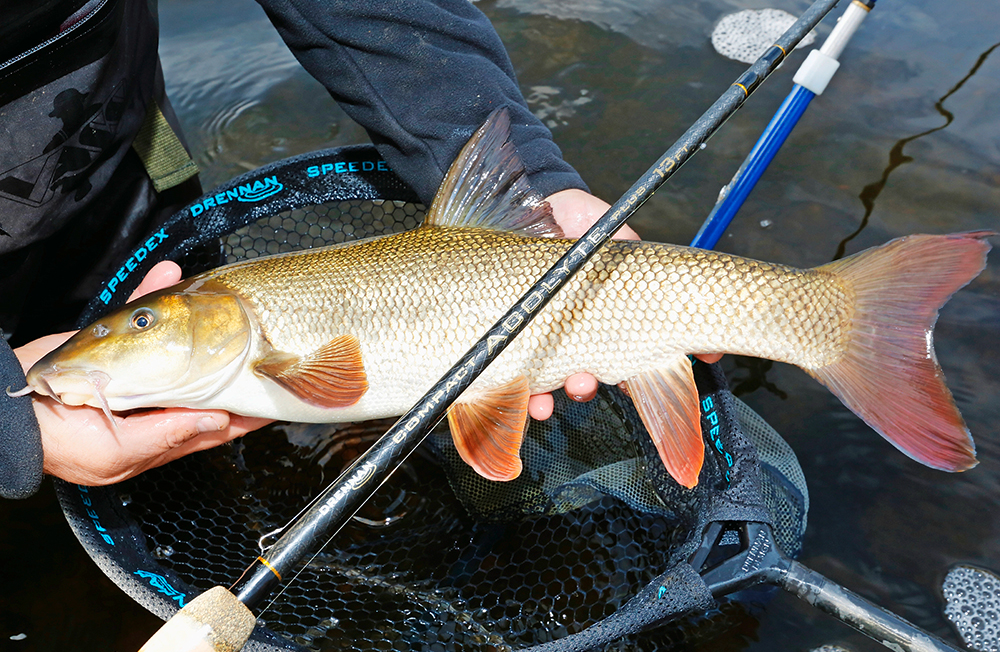
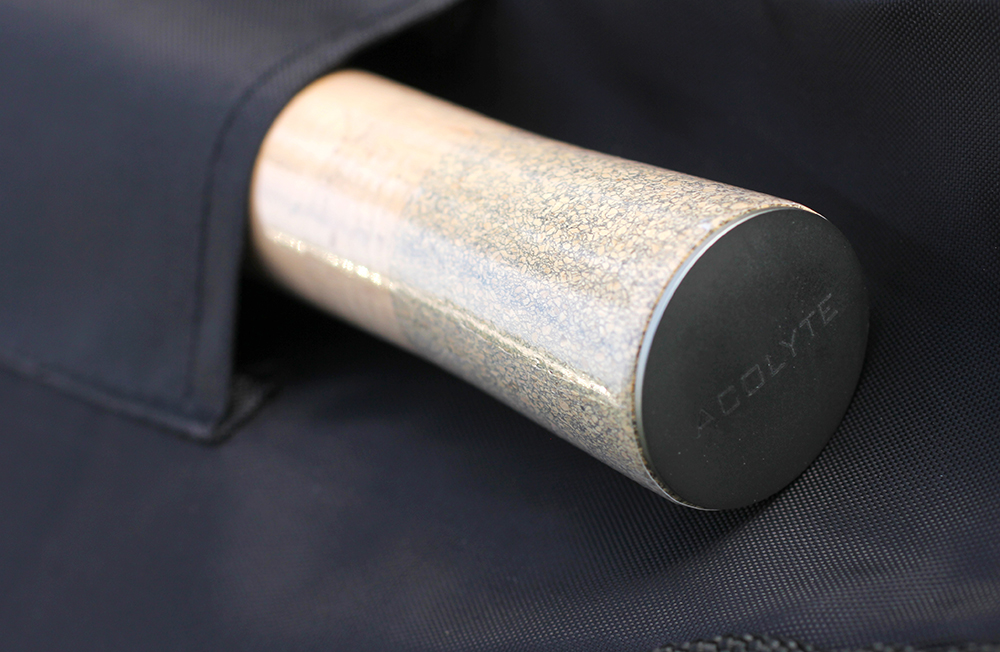
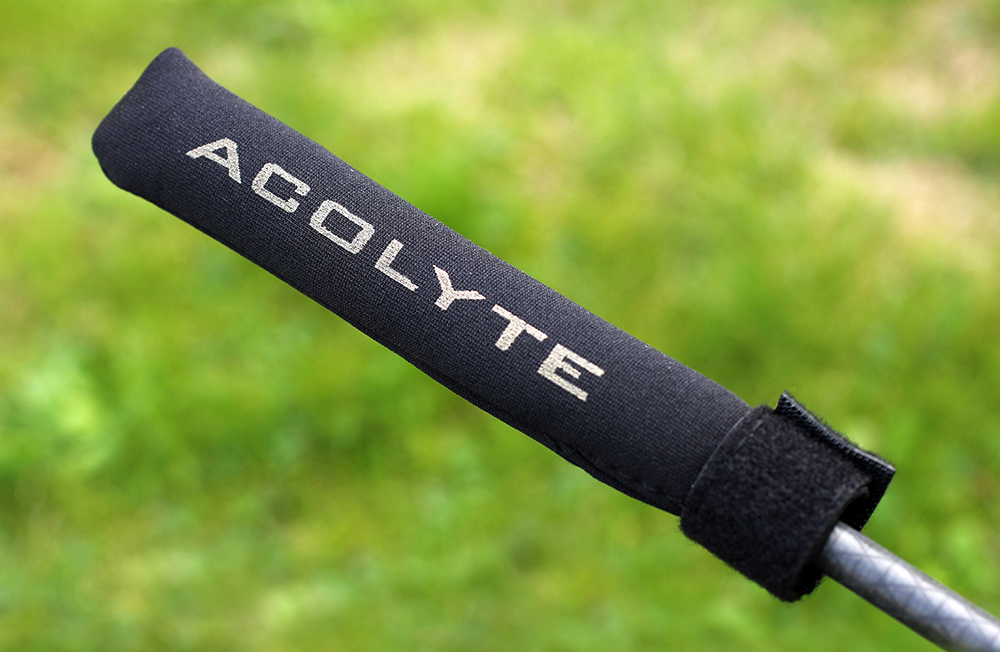
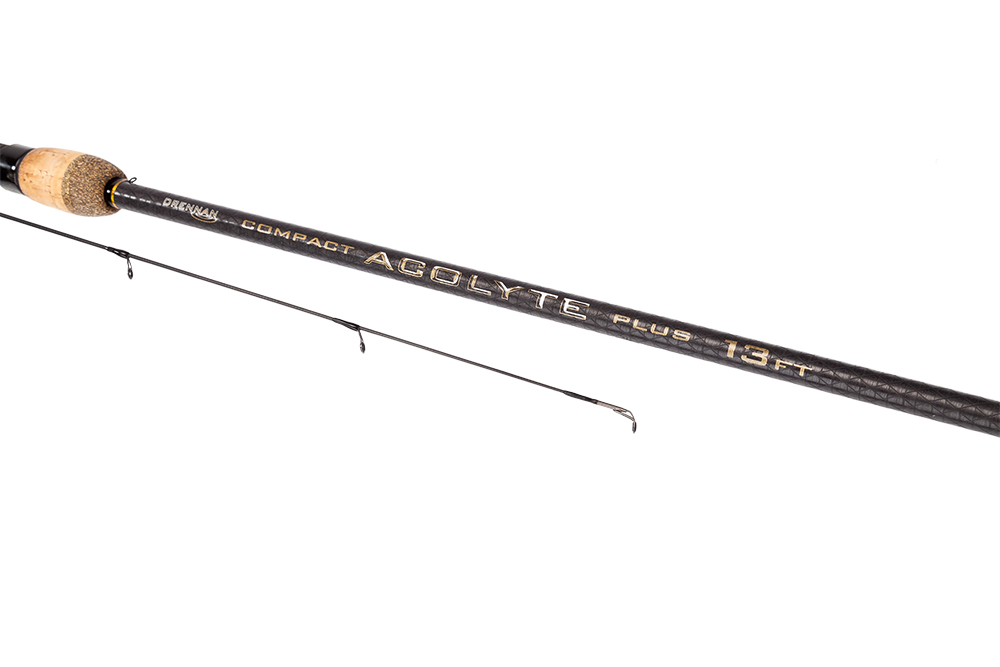
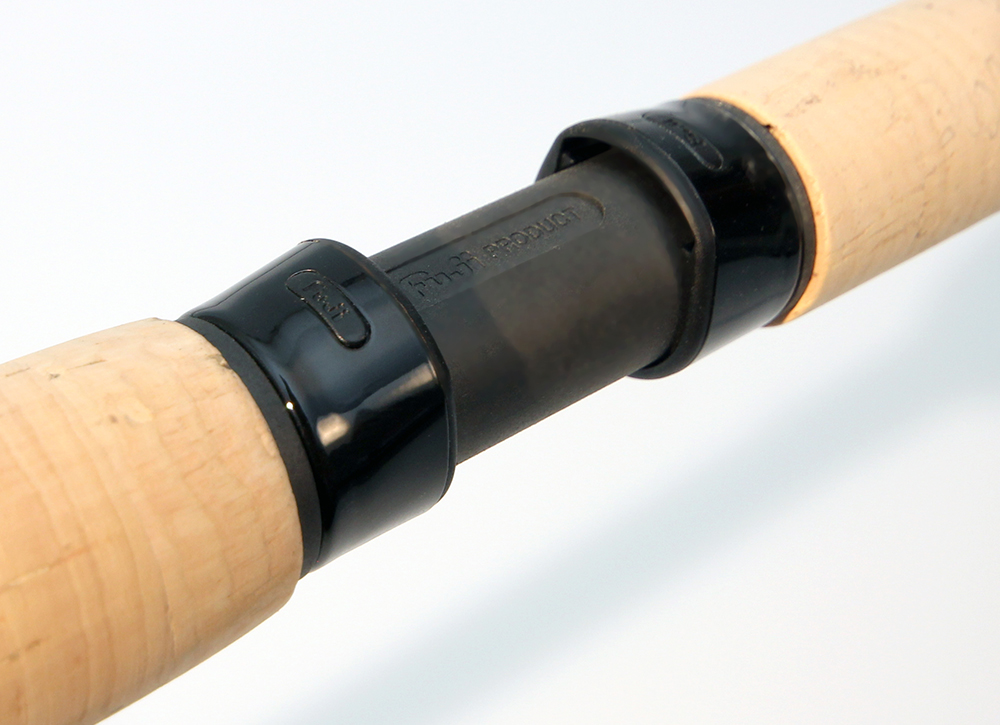
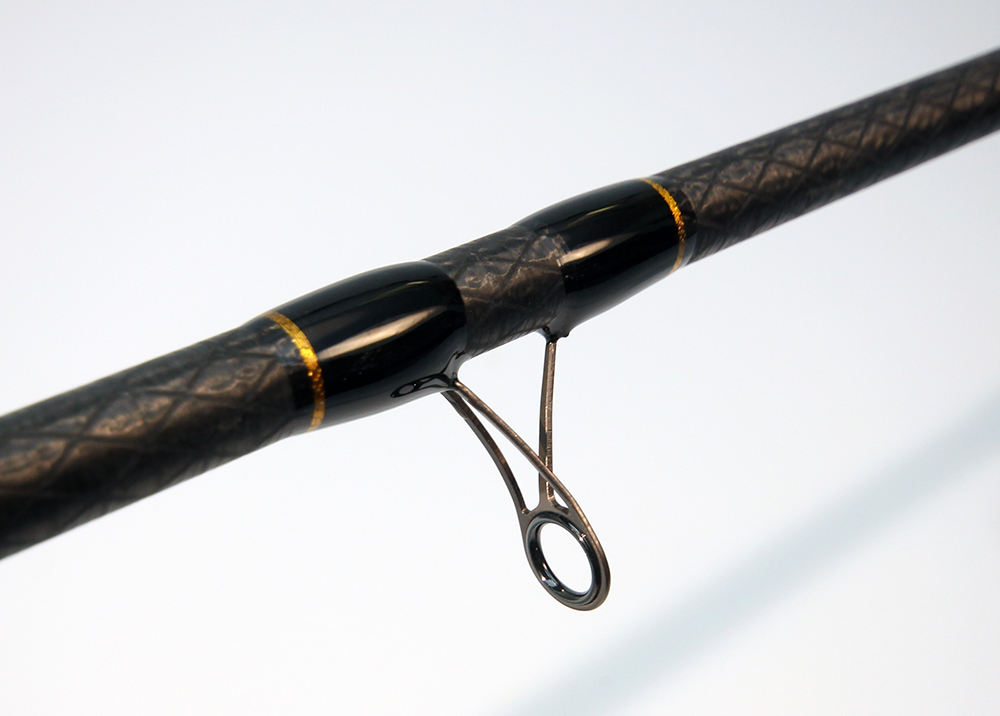
TECH SPEC
Length: 13ft
Pieces: Two
Reel lines: 4lb - 6lb
Hooklengths: 3lb (0.13mm) - 5lb (0.16mm)
Supplied with: Padded rod sleeve, retaining bands and rod socks
PAY AROUND
£209
Widely considered to be the best available, Drennan’s award-winning 13ft Acolyte match rods need little introduction.
The original super-light (4.5oz) Ultra makes floatfishing on rivers and lakes a pleasurable experience. The rods have a crisp yet forgiving action teamed with a viper-fast striking speed that can still set a tiny hook without fear of snapping off gossamer-fine hooklengths.
So, with all the boxes ticked, why would Drennan even think about making changes to these rods? Well, the company has… and yet it hasn’t. Let me explain. For those who prefer the original three-piece Acolytes, these rods remain unchanged and widely available.
However, they have been joined by two new Acolyte Compact versions, the 13ft Ultra and the stepped-up 13ft Plus.
These new two-piece rods have a patented design that enables the bottom 31cm of the handle to be unscrewed, leaving you with two similar length sections that can be quickly, easily and safely broken down with your rigs in situ. That’s never before been possible with 13ft match rods, unless of course you want to risk tip breakages, or spend more time untangling your rigs than setting up again from scratch.
The Compact Acolyte’s two sections are said to actually improve the rod’s balance and action by having just one ferrule in front of the handle, rather than the usual two, and that makes perfect sense.
But rather than simply just take the manufacturer’s word for it we took the Compact Acolyte Plus to the bank to see for ourselves – already all-but convinced by Drennan’s impeccable rod-building prowess.
As with the original three-piece Acolyte Plus model, the new Compact has the power to cast large floats and subdue quality fish. Essentially it’s a stepped-up version of the Ultra, but where would you use it? Well, it’s ideal for all long-range waggler and sliding float work, but legging-up a few skimmers and roach isn’t really much of a live test.
What was needed was a venue where we could use a big float and heavy line to catch something that pulled back – and not a carp!
Waters around Nottingham available on a Scunthorpe AA club book are among the finest on the Trent. So, armed with the Compact Plus fitted with my precious Hardy Conquest centrepin reel and little more than a few top-and-bottom floats, a pocketful of accessories and some bait – not forgetting the waders – I was off to a shallow, picture- postcard stretch where the float rules.
Wading into the shallows, surrounded by white foam created by the crashing weir behind me, I found a flat crease around four rodlengths where I thought the float would pass unhindered over the rocky riverbed.
Feeding Dynamite Baits Hemp with Snails, mixed in with small pieces of the meat carried in my bait apron, I soon realised why it’s important to use a light rod and reel combination. Regular feeding, and constant casting soon take their toll, especially when you’re not used to it.
But I have to say the Drennan/Hardy combination was as light as thistledown, and I fished for several hours without need of a rest. Casting a 4g alloy-stemmed Avon float proved effortless for the Acolyte Plus, and it could have easily handled double that weight.
It also fairly snapped the line off the surface with little more than a flick of the wrist – no great sweeping arcs of strike needed here to hit the bite, as the rod has a super-fast action with virtually no recoil or tip bounce.
I must admit I feared the worst, striking at distance with a two-piece 13ft rod, but my fears were groundless – it’s just perfect.
But the rod’s crowning glory is its awe-inspiring parabolic action. Its top section has a cushioning tip that tightens further down to generate a ‘power play’ fighting curve quite capable of handling the largest of fish.
That was proved as some whacking great chub and ‘never say die’ barbel were beaten in white water – after putting up the kind of scrap that would have given most other rods one hell of a beating!
VERDICT
Well, I’ll keep this short. During the live test I did lose a few fish, all very big barbel. It had nothing at all to do with the rod, it was simply poor preparation on my part, as I hadn’t loaded my reel with a heavy enough line.
This episode played on my mind all week, so I simply had to return and have another go. Reloading the reel with something more substantial, and re-rigging the rod at home, meant I could safely carry the made-up rod in the car all ready to go.
The result was my biggest-ever barbel on a float rod, estimated at 10lb-12lb. It fought like a demon, and no wonder I shall be forever grateful to Drennan’s new Compact Acolyte Plus.
Preston Competition Pro Super Light 9ft Feeder rod
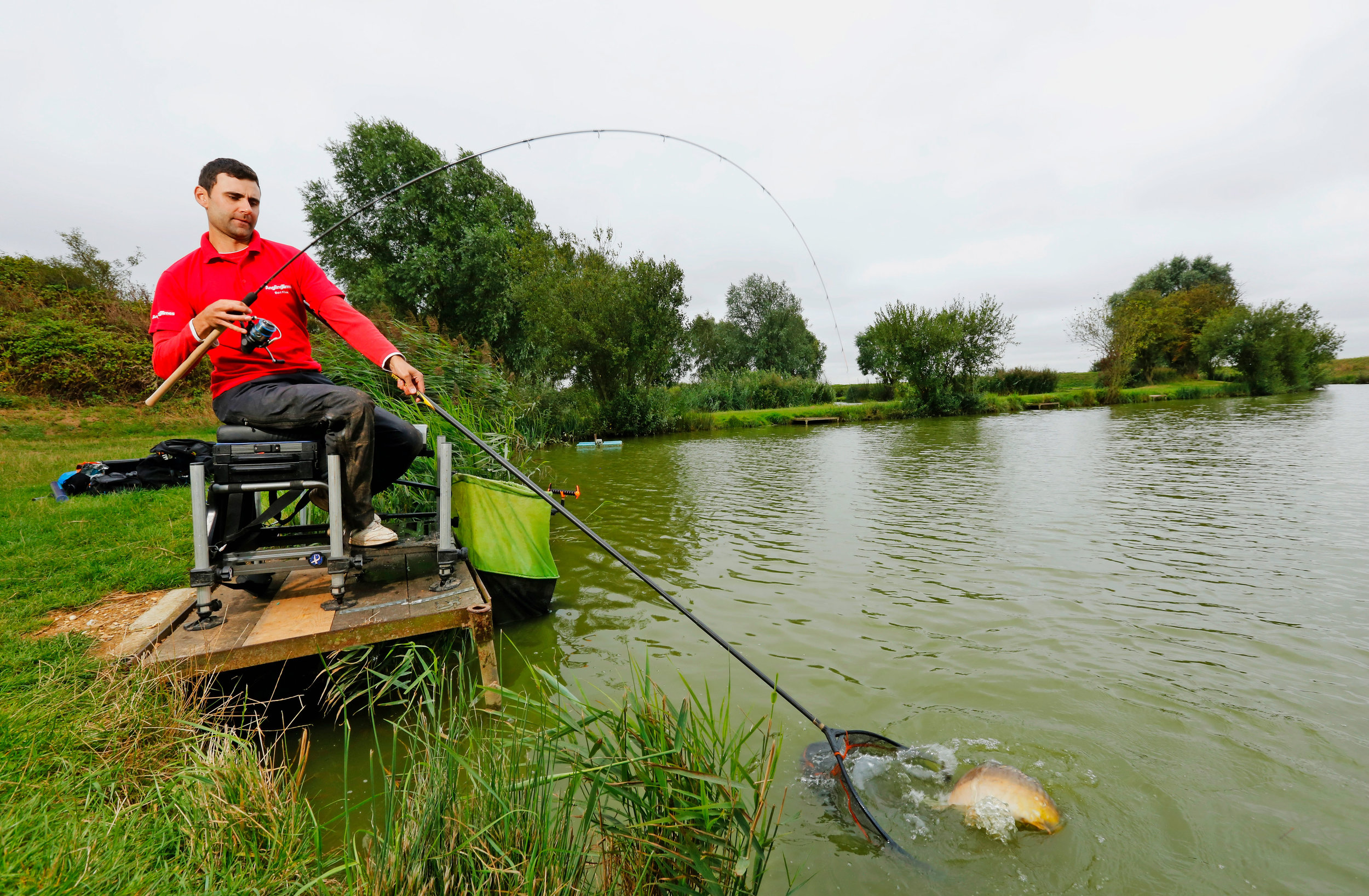

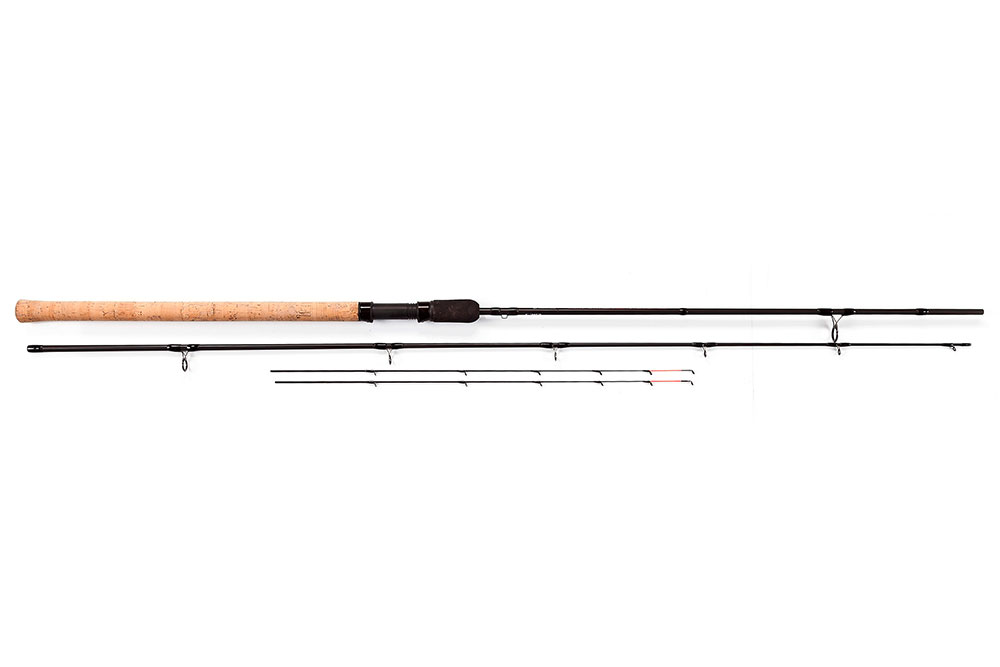
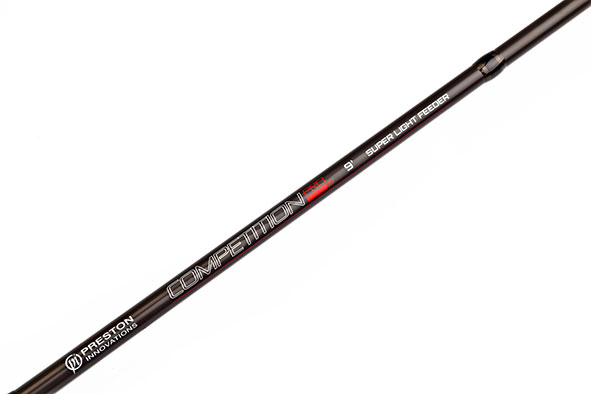
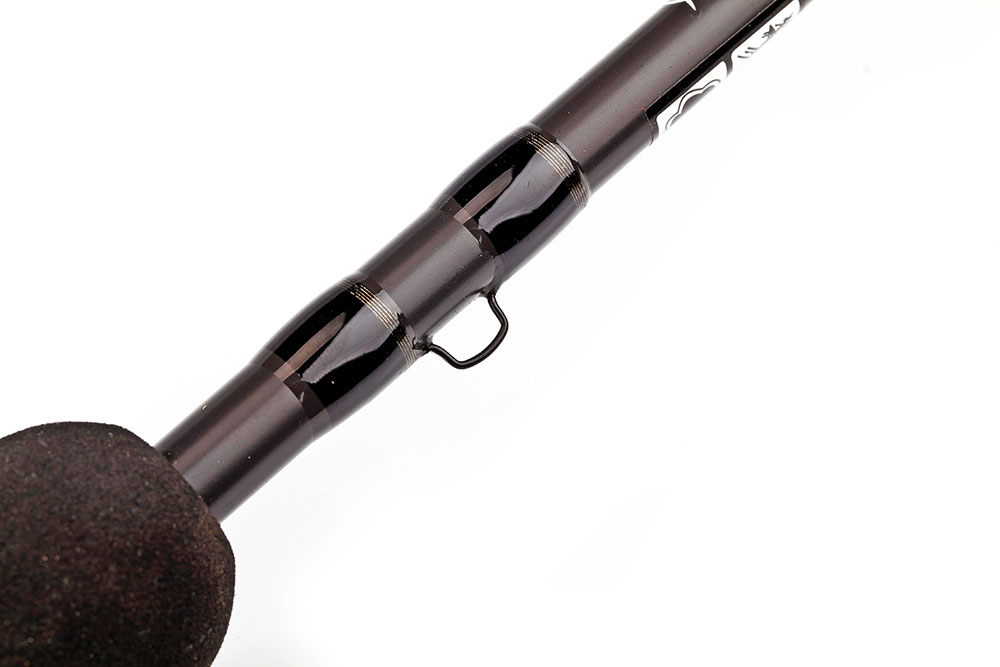
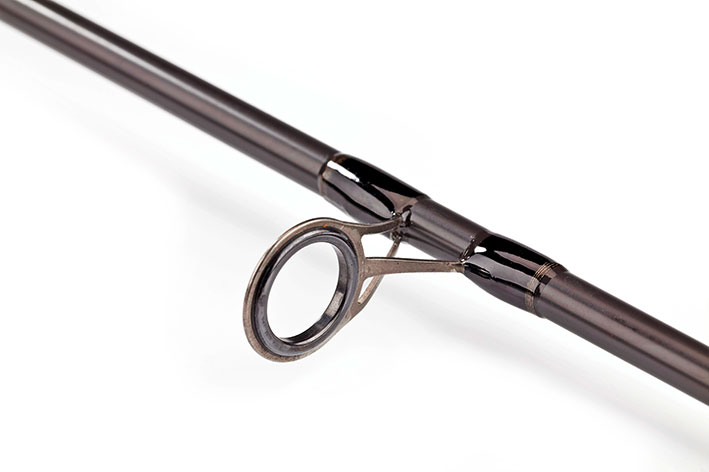
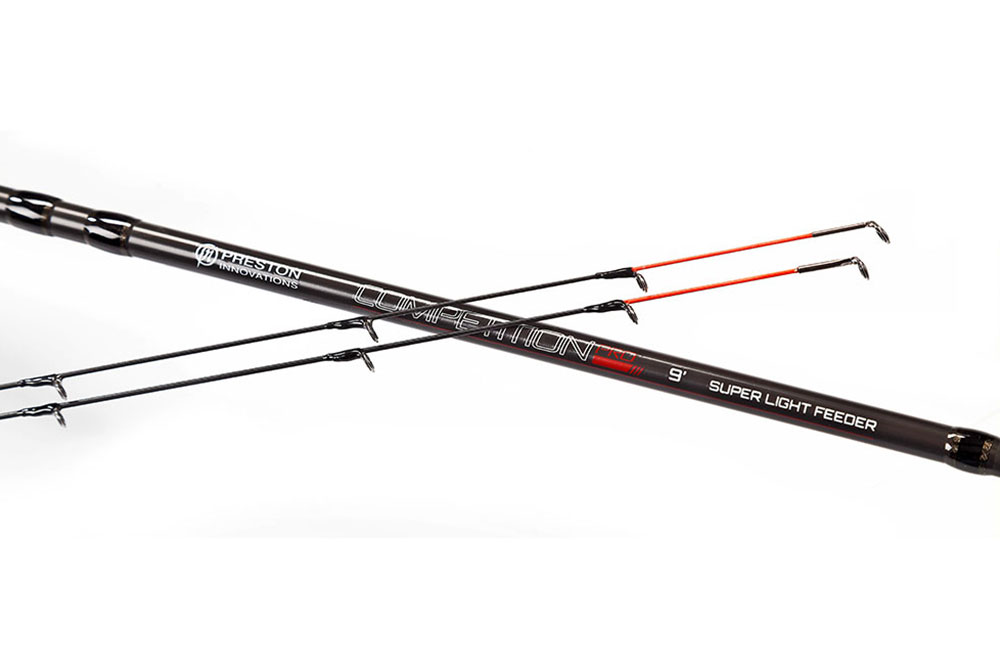
PAY AROUND
£89.99
There was a time when a ‘short’ rod was classed as 11ft maximum.
Nowadays a host of models in the 8ft, 9ft and 10ft class are available, including the Super Light 9ft Feeder from Preston Innovations. This is billed as a close-range tool for small feeders and bombs, and casts up to 30m.
It’s the baby of the Competition Pro range of feeder rods, which stretches right up to a heavy 13ft version. The Competition Pro is a definitely a series of all-round rods rather than out-and-out commercial tools, and although I could have taken it to a reservoir or a big lake and targeted small fish, it wouldn’t have been too much of a test. Instead it was thrown in at the deep end at Decoy Lakes’ ever-reliable Six Islands pool, which holds lots of carp in the 4lb-10lb bracket.
First, a note on the length. I absolutely love using a 9ft rod. Don’t get me wrong, it’s limited in terms of casting distance but for anything up to 35m or so it makes feeder fishing so effortless, especially with the hookbait tucked inside the frame of a Method or pellet version. A traditional open-end feeder with a long tail isn’t as aerodynamic, so a longer rod is needed to cast it properly.
With a 9ft rod, fish pop up under your feet for netting, as they do on a short F1-type top kit on a pole.
I clipped my line up for a short 16m chuck to the middle of the bowl at the car park end of the lake, where there is a sunken island. Believe it or not it’s quite difficult to discipline yourself to apply such a short cast – or it would be with a longer rod.
My 30g inline Preston Method couldn’t have been in the water much longer than 30 seconds when the 1oz tip I’d fitted pulled firmly round. A 5lb mirror carp was the culprit, and it was beaten in double-quick time. I quickly realised how much backbone and power this rod has, right through its faultless action. With several hooked carp I could feel the line grating through some submerged roots or vegetation on the bar, and I really had to give the fish some stick, standing up sometimes, to get them over it without breaking the hooklength.
Then I took the clip off and gave it a few good casts up the long sides of the lakes. This was surprisingly easy, helped by the large rod rings towards the base of the blank. I reckon you could punch a Method feeder 45m or 50m if you really went for it.
My final trick was at much, much closer range. I’d been throwing a few handfuls of pellets in the margins and a gentle underarm lob sent the feeder down there.
The rod was almost wrenched from my hands as I caught barbel and several more carp, including a double-figure common, which all made off towards a snaggy corner with an aerator. Despite a few hairy moments the Super Light Feeder took everything thrown at it, and smaller, softer rods like this mean fewer hook pulls too.
Browning Commercial King2 Medium Pellet Waggler rod
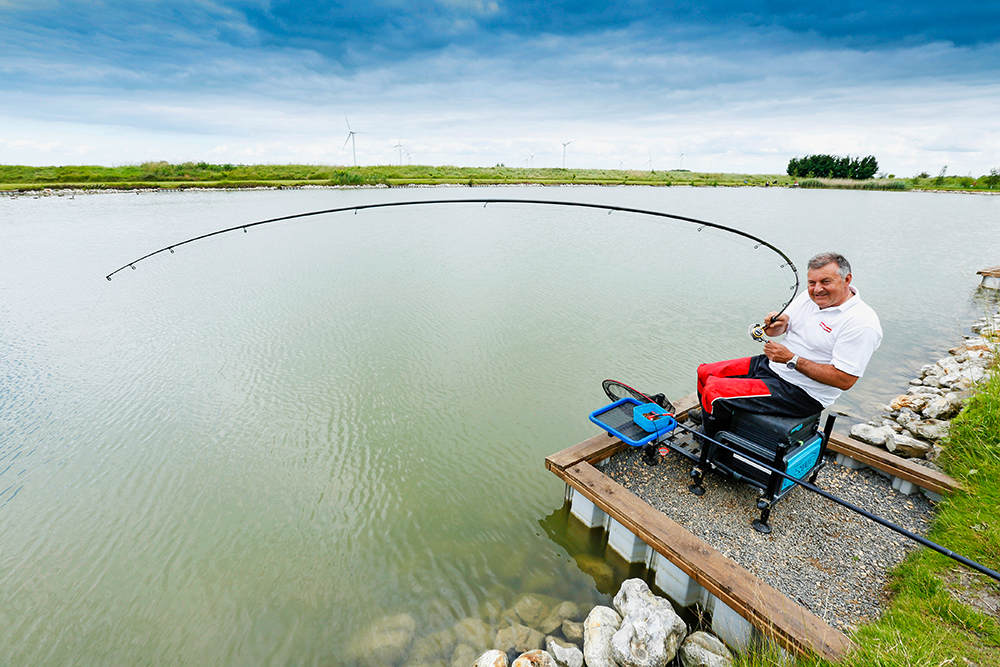
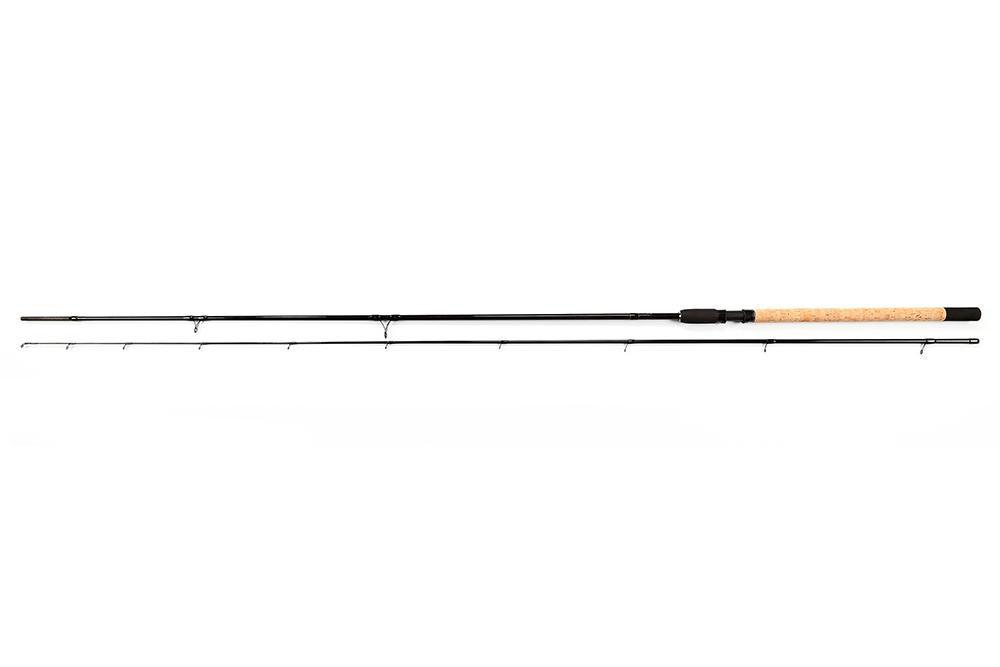
QUICK FIX
Top section: The top section of the rod has
a quick tip action with a fast recovery rate. This allows you to make longer and smoother casts.
Fittings: High-quality line guides are used throughout, producing super-slick casts no matter how great the diameter of your line.
Blanks: Made from ultra-slim high-modulus carbon blanks, they have two equal lengths so that they are ideal for carrying ready made up.
Action: The rods have a perfect parabolic non-locking action which is ideally suited to commercial fishery carp of any size.
Handle: The new Commercial King2 rods
are designed with shorter cork handles so that they can be more easily manoeuvred around the angler’s body.
PAY AROUND
£69.95
Browning has revamped its range of Commercial King rods.
The latest models retain many of the build characteristics of the originals – slim carbon blanks, two equal-length sections and a responsive, progressive action.
However, Browning has further refined its best-selling UK range with improved cosmetics, beefed-up casting prowess and a tweak to provide a little more power through the mid-sections.
All this has been accomplished without Browning significantly hiking up its prices, which something to be applauded.
So, with the summer sun in full water-warming mode and carp cruising about all over the surface of nearly every lake I have visited in the past two weeks, it made perfect sense to take a closer look at Browning’s latest Commercial King2 Pellet Waggler rods.
These 11-footers come in Medium and Power versions, the latter boasting around 15 per cent more stiffness and power for situations involving bigger fish, or casting heavier floats up to 30g.
My chosen test venue, The Pool at Fields End Fishery in Cambridgeshire, is noted for its mixed stocks, so I chose the Medium model with a maximum casting weight of 20g. This is ideally suited to lighter floats, hooks and lines.
Assembling the rod, it’s immediately apparent that this is quality kit. At only 175g, it’s nicely balanced, with a super-quick tip action and fast recovery. That means it doesn’t wobble around much, making long, smooth casts easy to achieve.
My float choice was the small flighted John Bonney model that comes free on the front of Angling Times this week. It flew across the Pool to a range of 25m with no effort. The slightly reduced handle length made feeding with a catapult equally effortless, and that made very short shrift of what can otherwise be a rather tiresome ‘feed and cast’ routine.
Feeding little more than half-a-dozen 6mm pellets every 20 seconds or so, it wasn’t long before dark shapes were coming in to feed as soon as the pellets hit the water. But, as often happens on a well-fished venue, as soon as the float splashed down, they high-tailed it out of the swim.
The answer to this fishy conundrum is to feed twice, immediately before and after casting. You will also need to feather the line, so that the float lands with a gentle kiss on the surface. Get it right, bites will be savage. You now need to get them out of the killing zone as quickly and quietly as possible, by keeping the rod low, simultaneously reeling and pulling back.
For this you need full confidence in your rod, and reel for that matter, keeping the fish moving without pulling the hook, breaking the line or having the fish charge back through the feeding shoal. Basically you are pushing your kit to it limits, and it needs to respond and perform in equal measure.
This latest Commercial King2 Medium Pellet Waggler rod does exactly that. The added bit of muscle Browning has added kicks in as the blank approaches full parabolic compression, but its non-locking action provides enough of a safety factor for you to be able to dish it out without fearing the worst.
I was also impressed with the rod’s ability to deal with fish other than carp. During the live test some pretty hefty ide decided to have a go. These are not exactly cage fighters, but can be welcome weight builders in matches.
Their lolloping ‘fall-over’ swimming action means they are effectively dragged towards the net – hook-pulls happen all too often when using carp-style pellet waggler tactics. But not with this rod. It handled everything from near-double-figure carp, through to heavyweight ide and big roach, with aristocratic disdain.
VERDICT
I really liked the original Browning Commercial King rods, rating them right up there with many of the best models then available.
These latest rods look, feel and perform with every bit as much style, but with a little more bite.
Improvements to the cosmetics and furnishings give them an expensive top-end look which belies their very sensible price tags.
Mark Sawyer
JW Young Specimen Barbel Multi Tip Travel rod
PAY AROUND
£99.99
This is a handy little travel rod for anyone thinking about sneaking in a spot of barbel fishing when they’re on holiday. Ideal to tuck away in the boot of the car, the five-sectioned 12ft carbon blank has a powerful through action, able to deal with the largest of fish.
It comes with push-in quivertips of 2.5oz, 2oz and 1.5oz, and an Avon-style tip that could be used for heavy floatfishing. In a tough go-anywhere tube, other key features include high-quality lined guides, keeper ring, and a full cork handle with forefinger grip.
Shimano Beastmaster CX Commercial 9ft-11ft Float rod
The new Shimano Beastmaster CX rod range has been developed for small to medium-sized carp. Much modern match fishing takes place at 30 yards, so each CX Commercial blank has a parabolic fish-playing action that absorbs the power of the fight, preventing hook-pulls. There are Feeder and Float rod versions, ideal for all but the heaviest Method, straight lead and pellet waggler tactics.
PAY AROUND
£109.99
Hooray – at long last it looks like summer is on its way!
The daffs have bloomed, and on all the fisheries I have visited broods of downy ducklings swim in unison as if tied together.
As the water warms, carp are drawn inexorably towards the surface for some community sunbathing. So how can we tempt them into taking our baits?
Floating dog biscuits work, but they are banned on commercials so it’s down to pellet waggler, or wag and mag tactics.
Unless I have to cast miles, an 11ft two-piece float rod is usually my weapon of choice. Sometimes, though, especially when targeting F1s on snake lakes, casting tight up against islands or even dobbing, there’s definitely a case for an even shorter rod. Its added casting accuracy can pay dividends.
As if to second-guess me, Shimano has released a brilliant line-up of new Beastmaster CX Commercial rods, including this rather nifty 9ft/11ft model.
Not only will it cope with most commercial fishery float work, but the carbon blank includes a 27ins dolly-butt section that fits snugly into the cork and EVA handle, giving you a well-balanced 9ft rod.
In their shorter mode, dual length float rods can either be much too pokey, or limper than a Julian Clary handshake, leading to constant hook-pulls or protracted battles with fish on an under-powered blank. But after spending time with the new Beastmaster CX 9-11 I can happily report that this classy looking all-black blank offers a medium parabolic action, with an almost tippy casting performance, at both its 9ft and 11ft lengths. I’d guess that England Feeder international Rob Wootton and ex-Shimano consultant Mark Pollard had quite a bit of input into this rod’s development.
Despite its slim profile and lightweight Bio-fibre carbon build, the blank has more than enough beef to cope with the biggest of fish. It’s possibly better suited to casting floats from 4AAA upwards than it is small wagglers, and Shimano has given it a maximum casting weight of 15g, which gives it plenty of all-round scope.
VERDICT
This great new float rod from Shimano is aimed squarely at the match angler – well thought out, cleverly designed, with a build quality and furnishings normally only associated with top-end flagship models. The 9ft/11ft blank has the flexibility to be used on all types of commercials with reel lines and hooklengths of 4lb-8lb.
Mark Sawyer
Shakespeare Superteam Match 13ft rod
TECH SPEC
Length: 13ft
Power rating: 6lb
Pieces: 3
Handle: Cork/EVA
Rings: Zirconium
Extras: Side keeper ring
PAY AROUND
£89.99
You could do worse than use the Redditch tackle giant’s products down the years as a means of charting the development of the modern match fishing rod in terms of materials, furnishings and specifications.
A potted history of Shakespeare notables would show the fibreglass Match International as a rod ahead of its time. This was followed by the excellent, if rather expensive, President which I believe was the first carbon fibre rod to be built with a spliced-in tip.
Then we had the superb Mach 2 Boron which held centre stage with matchmen for many seasons, but was eventually superceded by the Mach 3 carbon. Since then we have been blessed with the firm’s high-modulus carbon Superteam model, launched in 2014.
Shakespeare did, of course, introduce many other match rods but those listed above were widely recognised as being as good as it got back in the day. Remember, it wasn’t all that long ago that match fishing was all about using a waggler or stick float to catch winning nets of roach, chub, dace, perch or bream, the tool of choice being a 13ft, three-piece.
The finesse to deftly flick a small waggler across a canal, cleanly pick up line from the surface when long trotting and cast bodied wagglers or sliders into deeper water on rivers and lakes, are qualities we expect of any good match rod.
That brings me nicely on to Shakespeare’s Superteam 13ft match rod which really is a jack of all trades and will take all these tasks in its stride. Yes, this rod was first introduced a few years back, but that doesn’t make it in the least bit tired or dated. It remains to this day one of the best all-round match-style float rods that few others can hold a candle to.
The three-piece pencil slim carbon blank is nice and light in the hand, making it easy to hold for long spells, and a requirement of any good river rod. Worthy of note are its zirconium oxide guides that enable almost friction-free line travel, very useful when trotting a river at the pace of its current.
Its fast, progressive action doesn’t lock up under stress, so when you hook into a really big fish the blank will absorb and keep absorbing its runs and lunges with no fear of the line snapping. At the same time it has the backbone to boss fish away from snags.
Live testing the rod was interesting, as I already had some idea about the Superteam’s performance from an earlier Angling Times review. This time, rather than take it to a carp puddle or river, I thought I would test the blank’s sharpness and line pick-up qualities on a deep venue I knew held some big roach and decent ide.
Waggler tackle with small hooks and maggots, coupled with a nagging easterly side wind, wasn’t perhaps the ideal mix for a decent day’s fishing. But I needn’t have worried – Shakespeare’s finest 13ft of carbon cast a hefty three-swan insert waggler with ease and unerring accuracy.
With the float set at 12ft deep, line pick-up speed was central to hitting bites and the rod didn’t disappoint, connecting time and time again with the most tentative of enquiries.
As the fish responded to the feed they started coming up in the water, and bites became lightning-fast.
Now the line needed to be whipped from the surface at a rate of knots, and yet again the rod performed impeccably. Not merely a jack of all trades but a master of them all.
VERDICT
Another pure class floatfishing rod from the Shakespeare stable and perfect for silverfish, the Superteam 13ft is tactically flexible and ultra-reliable. Use it with confidence, however light the terminal tackle. Its anti-locking nature and progressive action allows it to cope with sizeable fish, something that cannot be said of many old-school float rods.
Middy Baggin’ Machine Synaptic Duo rod
TECH SPEC
Two tops: Waggler and Feeder
Features: F-Lined Guides, hook retainer, two spare quivertips, Synaptic carbon design, ergonomic reel seat.
Casting weights: 2g to 25g Wagglers; 10g to 45g Feeders.
PAY AROUND
£109.99
This Middy Baggin’ Machine Synaptic float and feeder Duo is ideal for anglers on a budget who want a single rod to cover a multitude of different methods.
It has two separate top sections and comes with two push-in quivertips to make up a 10ft feeder rod that’s perfect for parrot cage commercial fishery pegs. With the feeder top, the rod is capable of fishing Method feeders up to 45g as well as cage and blockend feeders and straight leads. It has a soft progressive fish playing action, but with loads of power down the blank, and will handle reel lines up to 10lb with hooklinks up to 6lb. There’s also plenty of power to land double-figure carp, and the rod feels nicely balanced and responsive.
During a live test at the impressively stocked Lou’s Lake at Cambridgeshire’s Decoy Lakes, the rods mettle was well tested with plenty of F1s, as well as the odd larger carp. It cast a fully loaded Method feeder with impressive accuracy up to 30m with ease. The Synaptic blank is made from carbon and glass, which produces a very lightweight, fun-to-use tool, with an almost anti-locking action. Hook pulls are kept to the absolute minimum.
With the waggler top fitted, the rod is still 10ft in length, and will cast floats between 2g and 25g, making it ideal for up-in-the-water pellet waggler tactics. It can handle reellines up to 8lb and hooklinks up to 5lb.
The waggler section has a little more stiffness through its mid-section than the feeder top, but it still retains plenty of cushioning forgiveness, and is more than capable of absorbing last-minute lunges from even the largest of fish at the net, without risking hook pulls.
VERDICT
The Middy Synaptic Duo would make the perfect tool for the summer pleasure angler. Designed for use mainly on commercial carp fisheries, the rod is easy to transport and equally at home fishing a Method feeder or a pellet waggler.
Drennan Acolyte Feeder Plus 12ft rod
PAY AROUND
£189
Tackle giant Drennan has recently added two new models to its top-end Acolyte Feeder series. The latest 10ft and 12ft Plus rods are said to be the most powerful within the family, which includes 10ft, 11ft and 12ft Ultras with lighter actions, as well as an existing 11ft Plus rod.
The 12ft Plus model I tested is constructed using the same super-slim, two-section high modulus carbon blank featured on all Acolyte Feeders. But on this rod its mid to top section areas have been substantially beefed-up, to provide the blank with a higher weight loading point.
This not only aids its casting potential, enabling feeders and leads to be propelled greater distances, it also allows heavier weights up to 60g (2oz) to be used.
Drennan claims casts up to 60m are easily achievable, with even greater distances possible if you have good technique and, having live-tested the model on a large open water venue, I wouldn’t argue.
Other notable features are its stand-off SiC lined guides that help to keep the line well away from the blank, enabling the reel line to move quickly and smoothly through its guides, again to help distance. To that you can add a high-quality original Fuji screw down reel seat, full length 23ins-plus cork handle, and three push-in carbon quivertips, which have been selected to blend in with the rod’s parabolic fish-playing action.
So when, where and how would you use this rod? It’s certainly well suited for large expanses of open water – including rivers – and for all species of big fish.
The blank’s extra backbone provides plenty of casting clout which makes it ideal for all types of feeder and straight-lead tactics, just as I experienced at Lincolnshire’s big-fish mecca Bain Valley at Tattershall Thorpe.
The fishery’s windswept and open Halifax Lake holds some very big carp, which are noted for their fighting qualities. During the warmer months when the water is coloured, these can be caught on a pole in the margins, but once the colour starts to fade away, so do the fish. And like so many big waters in clear conditions, fish tend to shoal up towards the middle of the lake, a good 70m from the bank, more than a decent cast for any type of feeder rod, let alone one with such a slim profile as the Acolyte Plus.
Bread is the key bait, as it is on so many carp lakes in the cold. But Bain Valley is deep, so the punched disks need popping-up some three feet off the bottom to find the fish.
The longer hooklength adds yet another degree of difficulty to the cast. However, a decent sized bomb soon sorted this problem out. I did feel, though, that using an ounce-and-a-half of lead at around 65m-plus, the blank was on the upper limit of its capacities. To be fair, it was a very long chuck, and the Acolyte’s tip recovery post-cast, and its responsiveness, were never found to be wanting.
The rod’s push-in quivertips are faultlessly matched to its carrier section, with the 2.5oz, 3oz, and 4oz carbon quivers ideally suited for Method feeders and all hair-rig tactics.
Once a fish is hooked the blank’s action is surprisingly robust, and enables you to pull very hard without it ever feeling as though it might fold when under pressure – perfect for all big fish, not just carp.
The 12ft length enables a quick contact to be made with fish hooked at distance, and nothing that I caught while live testing, ever felt like it could dominate proceedings, which again for such a light and slim rod is very impressive.
I wouldn’t use it with small hooks and light lines, as I feel it had a little too much stiffness toward the end of the carrier section for gossamer gear, but as it wasn’t designed for that anyway, it’s hardly a criticism. I am, though, surprised that Drennan hadn’t moved the butt guide further down the blank, even if it meant losing a guide further up (think carp rod) as this may have added even more casting prowess.
VERDICT
Another sure-fire winner from Drennan. The Acolyte Plus feeder would be every bit at home on Boddington Reservoir as on the banks of the Severn or Trent. Thanks to its same-length design, and top ‘n’ tail retaining bands it is easily transported ready made-up, and is sure to be popular with long-range feeder fishing fans.
Mark Sawyer
Preston Innovations Competition Pro 12ft Medium Feeder rod
PAY AROUND
Preston innovations Competition Pro 12ft Medium Feeder
RRP: £109.99 (but shop around)
PXR Pro 4000 reel
RRP: £104.99 (but shop around)
Not quite as cheap as chips, but more versatile than a Swiss army penknife, is this tasty pair from the Preston stable.
The three-piece 12ft Competition Pro feeder is as much at home dishing it out on rivers as it is battering them down at your local commercial carp venue. The all-carbon blank is nicely put together, and features an old-school full-length 25in cork handle with screw-down reel seat and EVA thumb grip.
Its seamless, flat spot-free progressive action is ideal when targeting big bream, carp, barbel, tench and, of course, chub. The lightweight blank has just about enough softness at its tip to make reel lines of 4lb-8lb with hooklengths down to 0.12mm diameter feasible and, like all good feeder rods, this one has a very high loading point.
This means that when a feeder is attached, the rod only bends from its tip, enabling its backbone to kick in and propel the feeder forward, rather than just lobbing it up and out, as happens when the weight loading area is too far towards the mid-section.
Other features on this Preston rod, which the manufacturers suggest will cast feeders up to 60 metres, are eight low-profile large diameter lined guides. The six equivalent guides on the two spare quivertips also have enlarged diameters, so if you’re off to Ireland, where heavy shockleaders are often used to cushion long casts and protect against zebra mussels, you shouldn’t suffer the annoyance of having the knots catching in the eyes.
The perfect foil for this rod would be its matching Preston branded reel, the award-winning 4000-sized PXR Pro. This model is ideal for winching in heavy feeders and is packed with features including a lightweight aluminium body, quick-release push button spool (plus one spare), precision front drag system, robust stainless steel hollow bail-arm and hard chrome-plated line roller.
Most importantly it runs smoothly and tirelessly on six stainless steel bearings and generates a 4.9:1 gear ratio.
Live testing tackle in winter can be tricky. With the bigger rivers out of sorts, but fed up with bagging commercial carp, where else could I take the Preston pair to prove their mettle? The light-bulb moment eventually came and we were off to Northamptonshire’s River Ise. A stealthy approach using a small cage feeder packed with liquidised bread, and flake on the hook, would hopefully prove successful. The set-up was simple. The reel was loaded with 5lb mainline straight through to a running feeder, stopped with No.8 shot 12in from a size 10 hook. First cast saw the tip tremble, and then it trembled again before pulling round in a classic chub bite. A spirited fight saw a fair sized fish lunging for the nearside reeds, but the 12ft Competition Pro Feeder had a bit too much backbone for any of that old malarkey, and quickly thwarted my quarry’s escape plans.
Through pouring rain, covered in mud, bread and fish slime, both the Preston items performed faultlessly and they get a huge thumbs-up from me.
VERDICT
If there were such a thing as a ‘one-rod does it all’ feeder model, Preston’s Competition Pro Medium Feeder would comfortable pass the test. Every bit as much at home on a commercial carp fishery as it would be bream-bashing on an Irish lough or fishing a big river for barbel, it’s a great all-rounder. As for Preston’s PXR Pro reel, you don’t have to spend long using one to see why the angling public voted it the best reel in its class last year.
Daiwa Harrier Match 13ft rod
PAY AROUND
£54.99
There was a time not so long ago when a three-piece 13ft float rod was standard issue for all match anglers.
Sheffield, Leeds, Rotherham and Birmingham all boasted legions of matchmen whose angling clubs were linked to massive national industries and working men’s clubs. Every weekend would see charabanc outings to the banks of the Witham, Welland, Trent or Severn, where floatfishing was still king and legering came a very poor second.
The best float rods of the day were mainly built on a Golden Jubilee blank, reappearing as WB Clarke’s
All-England, Milbro Enterprise or Billy Lane Match rods.
The first carbon rods weren’t far away, though, and when Fothergill and Harvey’s carbon blank appeared in 1975 they cost a king’s ransom at £133. The early carbon rods, nowhere as good as today’s, cost the equivalent of over £3,000, as much as you’ll pay for a modern flagship pole.
This history lesson earns a place here because 13ft float rods, once the most popular on the market, have evolved tremendously and are available at a steal of a price.
One such model is Daiwa’s 13ft three-piece Harrier Match, which can be found for as little as £44.99.
The rod is built on a decent enough lightweight blank, making it easy and comfy to hold. Its medium-fast action will cast small 3AAA wagglers with no trouble, and it boasts a full cork handle with an EVA lock-down foregrip, lined guides and a matt low-glare finish.
It isn’t the crispest float rod I have ever come across, and it may lack a bit of finesse. But what it can do in spades is handle whatever comes its way – something I was to find out while I was live testing the rod at Boston’s Westwood Lakes.
I had set my stall out for a net of roach and ide, or maybe the odd bream, but the tea-stained Kestrel Lake looked that dirty, I’d have been content to get a bite from anything.
With Storm Imogen racing with unstoppable force across Lincolnshire, this was far from being the best of conditions for floatfishing.
Still, with a 0.10mm hooklength and size 20 red maggot-baited hook on a slow-falling rig, something would surely have a go… wouldn’t it?
It seemed like an age for the bite to come, but eventually it did, and the blaze-coloured float tip sank slowly beneath the surface.
The strike was met by a little more resistance than I had expected, and the rod instantly took on an alarming fighting curve. This action, best described as on the through side of progressive, is pretty much what you want from a float rod if you’re likely to encounter bigger fish.
At first I thought I’d hooked, or even foul-hooked, a carp, hardly what I wanted from a silverfish session, and especially since I was using such lightweight terminal gear.
But as the scrap progressed it became obvious that I had hooked into one of the lake’s legendary barbel.
My balanced tackle was never more welcome than when I slipped the net under a pristine winter Bertram!
The Harrier Match, a long way from being one of Daiwa’s most expensive rods, had absorbed every lunge without my ever breaking sweat that I might get busted up and lose the fish.
Yes, it can be used for small silverfish, but take it from me, the Harrier is capable of an awful lot more when called to battle stations – just like its aircraft namesake, in fact.
VERDICT
On a day when everything but the roach wanted to feed, the Daiwa Harrier proved itself as a great silverfish all-rounder, with enough backbone to cope with much larger quarry when the need arose.
The rod would be well suited to a mixed commercial fishery, where the next bite could come from a matchbox-sized rudd, a powerful carp or, best of all, a belting barbel.
Mark Sawyer
Browning Sphere 10ft Bomb rod
TECH SPEC
Length: 3m (9ft 10ins)
Sections: 2
Max recommended casting weight: 50g
Spare quivertips: 0.5oz, 0.75oz, 1oz, 1.5oz.
Weight: 133g
PAY AROUND
£249.95
Those who regularly read my tackle review pages will be aware that I have been raving about Browning's top-of-the-range Sphere Feeder rods since first clapping eyes on them a year ago.
I adored them at first sight, and was bowled over by their lively, springy and steely feel and seamless non-locking parabolic curves. Live-testing them has proved to be nothing short of stupendous. They have casting power to burn, with recoil-less rigidity matched with a high weight loading area that will propel a feeder or lead a very long distance, even in the hands of a 'standard' distance casting angler like myself.
But - and here's the best bit - somehow the technical boffins at Browning have been able to produce blanks which blend all of that sizzle-factor with an almost imperceptible finesse which only comes into play when you hook a fish. Clever eh?
Faults are hard to find, other than the weight of their price tags, but they are right up there among the best.
Plaudits aside, there was one model left in the Sphere range that I had been waiting patiently to live-test, until the leaves started falling from the trees.
In the comfort of Browning's showroom, this rod felt ideal as a cold-water commercial-fishery tool, ideal for targeting F1s using light lines and small hooks, as well as being able to cope with the odd bigger fish. So as I tackled up on Decoy's unit-packed Beastie Lake, I was hoping for a live test encounter which would live up to my ambitious expectations.
I wasn't disappointed. The first thing you notice is that the blank has a long butt section at 5ft 2ins and a short a (3ft 4ins) carrier section, although when one of its four 23ins glass quivertips are fitted the two sections become equal length, making it easy to carry around as a ready-made.
Browning rates the rod as optimised at around 30m casting distance, which for me was under-gunning its true potential somewhat. My chosen peg was opposite an island end with a paddle type aerator as an added feature. My guess would have been it was around at least a 50m chuck, well above the rod¹s rating, and made even more difficult by the somewhat less than streamlined shape of the 20g pellet feeder I had tied on.
Not a problem! I even had to feather the line a little to avoid an overcast, and once clipped the rod hit the distance every time without fail. All very impressive, but not as impressive as what went on over the course of the next few hours. It¹s called Beastie Lake for a very good reason. Barbel, carp and F1s all grow fat healthy in this fabulous lake, and the Sphere handled them all with consummate ease, even when I had a dabble down the margin.
The resident barbel know every root-end and snag, but the rod pulled them away quickly and cleanly without a creak of complaint. I purposely over-loaded the stress-factor by pulling directly from above in an attempt to make the blank rotate, which in turn makes the guides twist out of alignment but they stayed die-straight throughout the ordeal.
I went through the card with this rod - maggot feeders with small hooks and 0.10mm hooklengths, pellet feeders with heavier lines and hair-rigs, straight lead and pellets - it was faultless. It would happily cope with main lines or braids from 4lb to 8lb and will cast up to 30g weights easily enough. Plus, you can use it with light lines and small hooks as its soft action is very forgiving, so hook pulls are kept to a minimum.
The four push-in glass quivertips are rated 0.5oz, 0.75oz, 1oz and 1.5oz which helps to provide it with sensitivity and durability.
Although it carries a bomb rod tag, the Browning Sphere model shouldn¹t be thought of as an old-school whispish wand designed for winkling out silvers from flooded rivers or canals. It¹s a very modern model with the casting backbone and parabolic fish playing action required for nearly all standard commercial fishery feeder and lead work.
The pencil slim blank has a superb transmission and steely feel, perfectly matched with the forgiving softness that is a hallmark of the Sphere range. If you¹re into the commercial fishery scene then you owe it to yourself to have a closer look.

